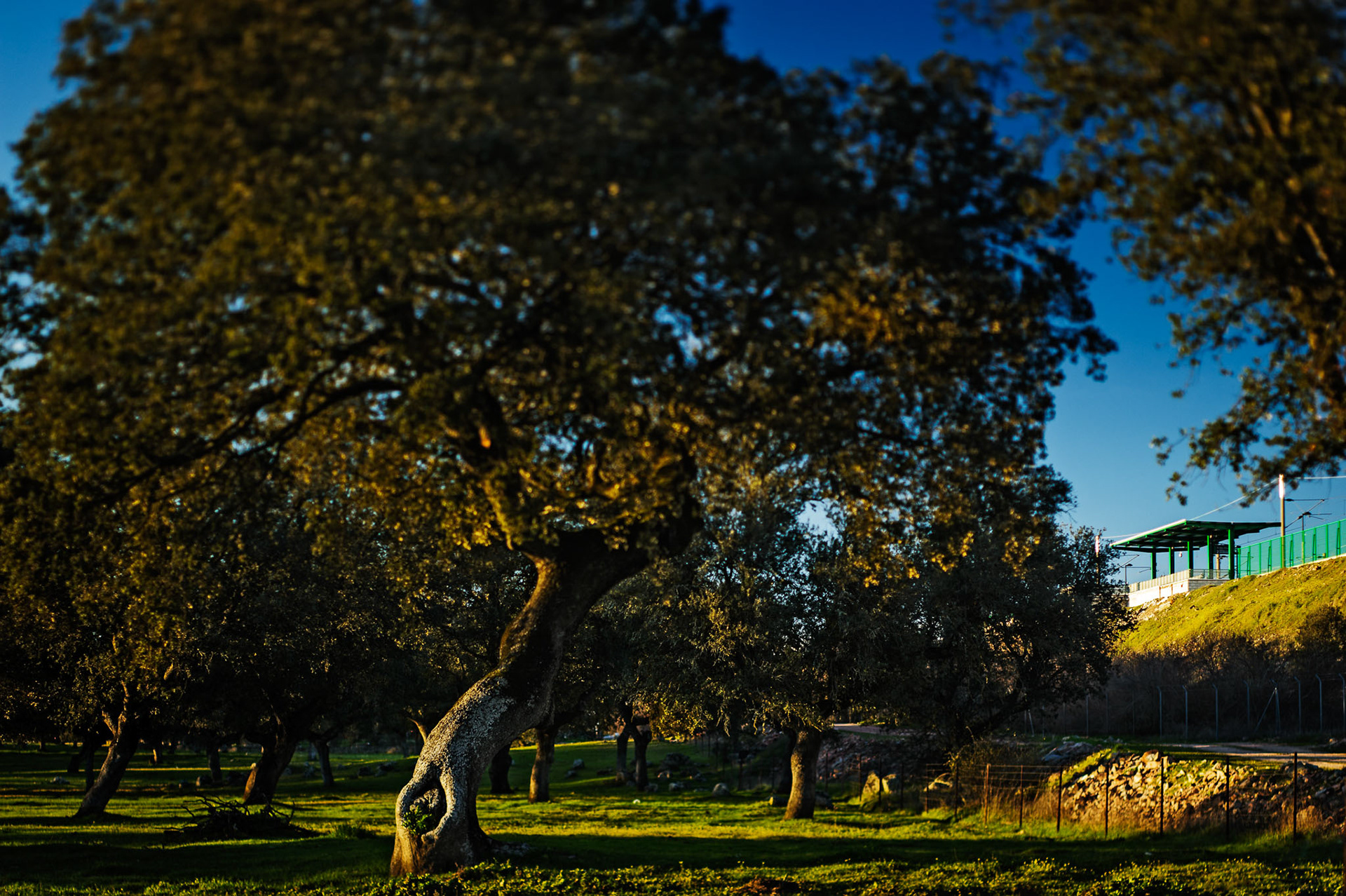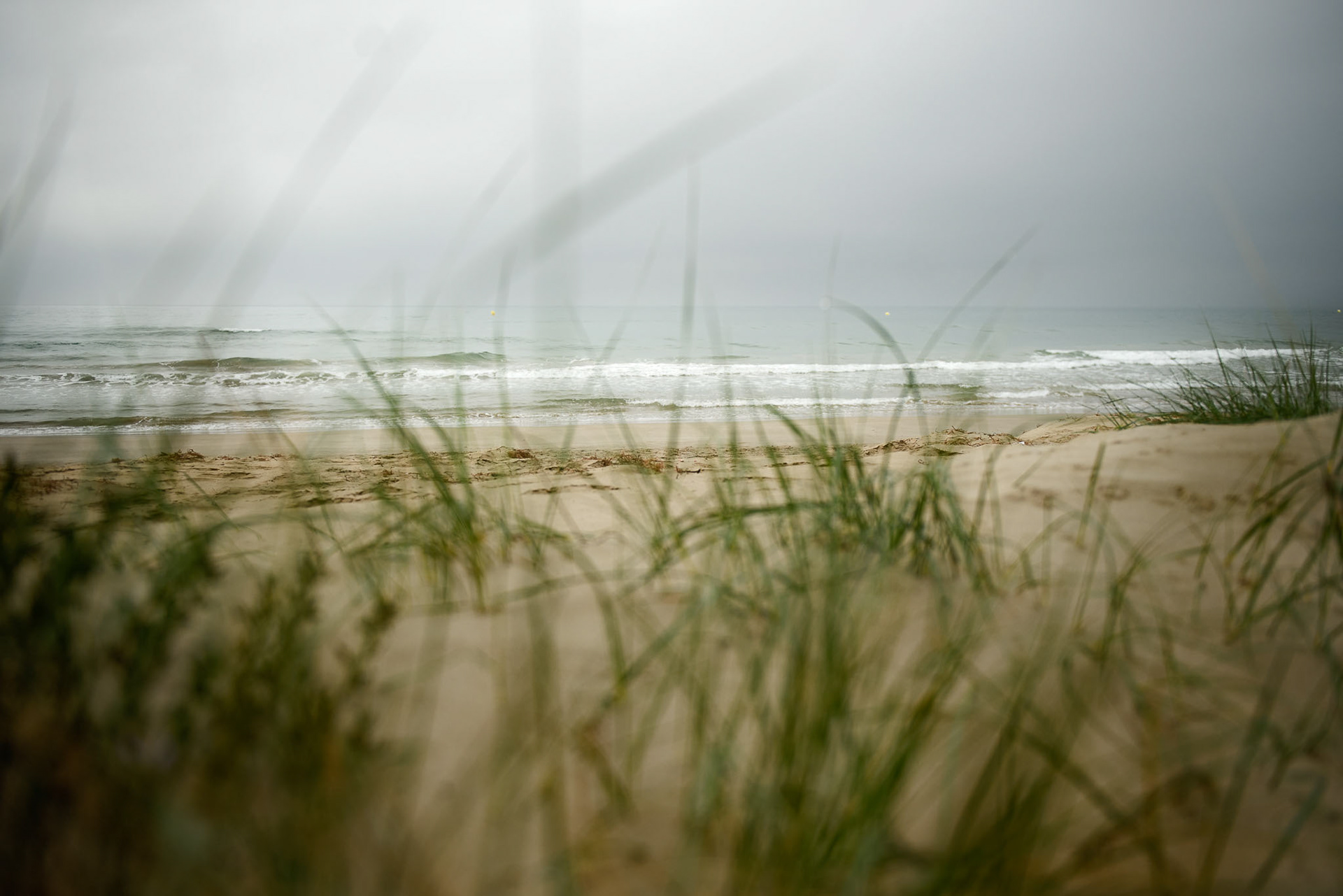SPAIN: SYSTEM ERROR
At the turn of the 21st century, in Spain nothing was impossible. No construction project was too large or too difficult. With vasts credits from German banks and money pouring in from generous European Union funds, visionary politicians sowed the Spanish territory with overdimensioned urban plans and yesterday’s state of the art infrastructural projects. The business was in construction; the projects’ necessity or economic viability were secondary issues all too often overlooked, if not plainly ignored.
In the peak year of 2006 Spain constructed more houses than France, Germany and Great Britain put together. Spain had Europe's longest highway network, twice as many commercial airports as Germany, and the world's second longest high-speed rail network. Spain was the land of gold and honey and the economic growth seemed to have no limits. The world was in awe of the "Spanish miracle".
When reality finally caught up with Spain, in 2007, its urbanized surface had increased by a shocking 52 % in only 18 years, and its landscape was littered by a myriad of deserted infrastructural projects. Airports without passengers, highways without cars, hospitals without patients... Not to mention the two million empty houses no one wanted to move into. All built with the money of the future generations.
What was once built as proud monuments over economic success, has now become the embarrassing evidence of a political system characterized by bad planning, thoughtless investments and widespread corruption. A system where, from the local to the national level, too many important decisions are driven by self-interest and obscure political agendas instead of by the common good. A system that has plunged Spain into its worst economic crisis since the advent of democracy.
However, the political establishment does not show any signs of having learnt from their mistakes. Since 2008, Spain has been the main recipient of loans from the European Investment Bank, receiving more than €68 billion, more than half of which has been invested in new infrastructural projects. Thus, several megaprojects are already being planned throughout the territory, and despite an evident lack of demand, the highway and high-speed rail networks continue their expansion almost as if nothing had happened. All in the hope that the construction sector will once again lead the way for the Spanish economy.
In the last months, some economic indicators seem to suggest that Spain's economy has hit rock bottom. However, with an unemployment rate of 24%, the recovery path will be anything but easy. If the Spanish people do not realize that public resources are limited, and do not learn how to demand of their leaders to manage them responsibly, Spain is doomed to repeat the mistakes of the past. Because these pictures do not show the consequences of the crisis, they show its causes.
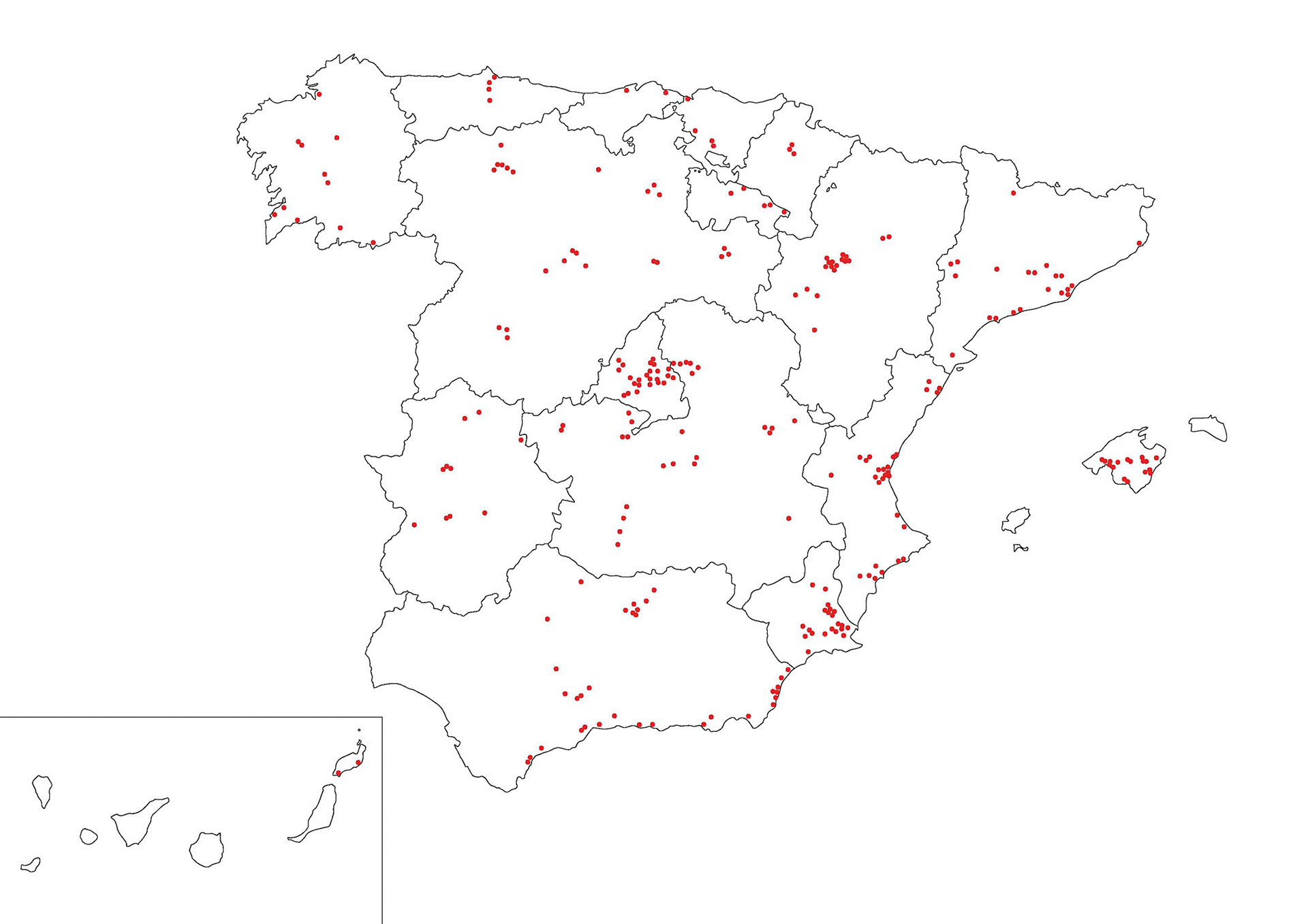
A journey of 12 000 km through all autonomous regions of Spain, documenting more than 250 sites where construction has been the purpose of generating economic activity instead of the means.
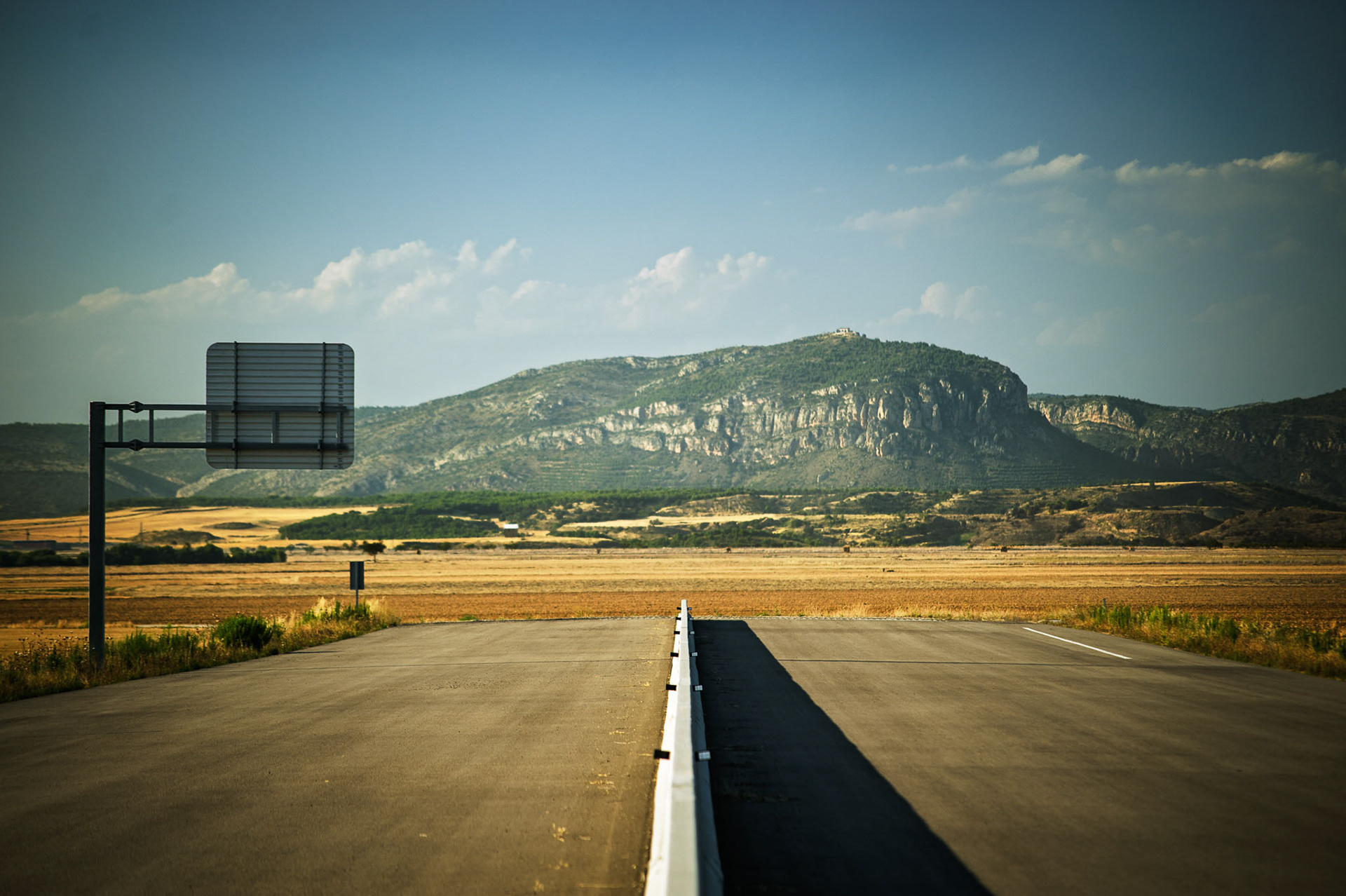
Highway A-14. Alguaire, Lleida, Catalunya. Highway A-14 began to be built where it was easiest to expropriate soil, far from all possible junctions. When successive budget cuts stopped the construction in 2012, all there was left was a 10 km long chunk of asphalt that goes from no place to nowhere. The works to connect it with the provincial capital started in 2013. Total cost: €84 million.
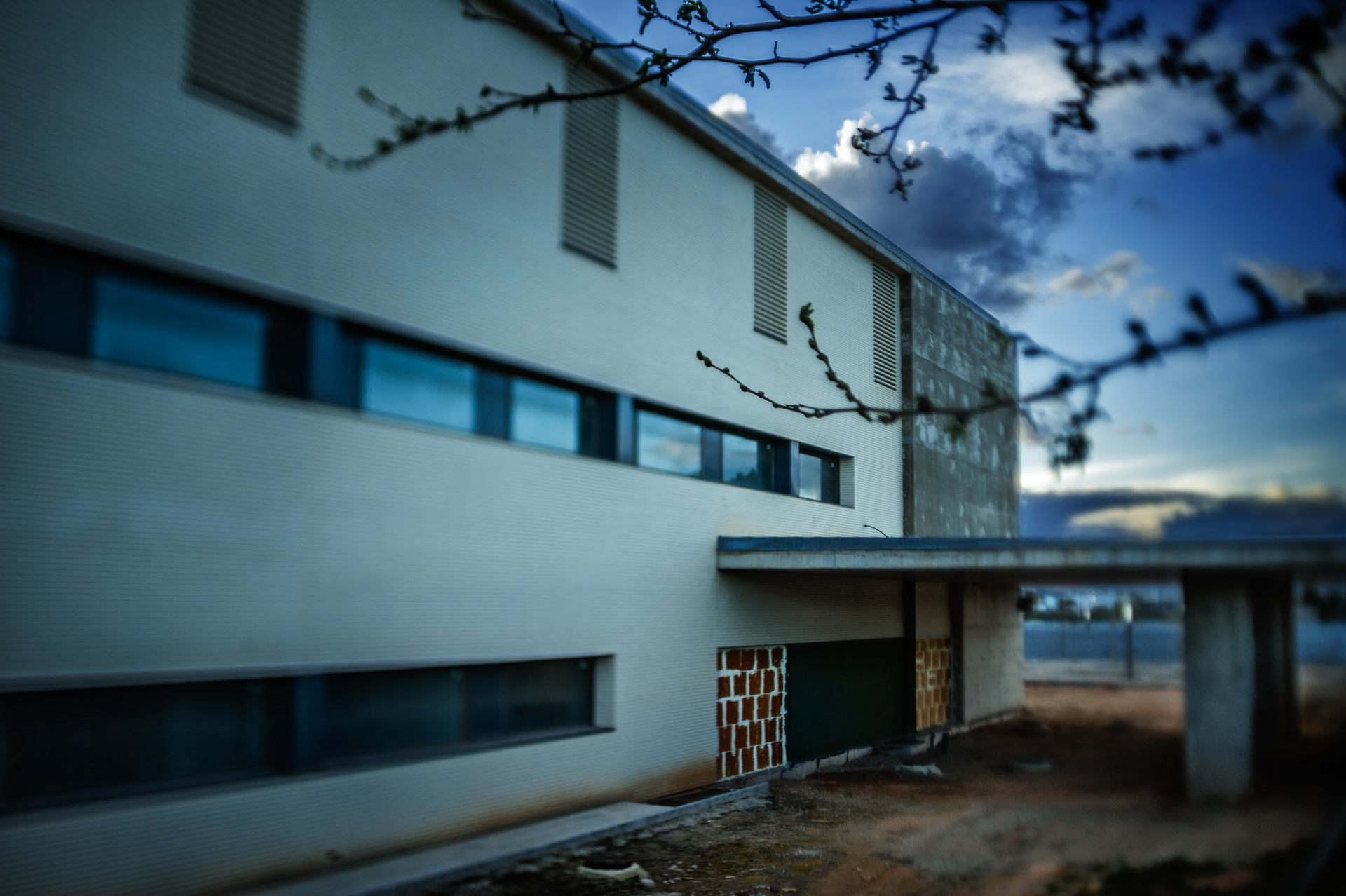
Llíria County Hospital. Llíria, València, Comunitat Valenciana. The construction of this hospital began in 2007, with a budget of €26 million. Five years later, when it was almost finished, the regional government realized that it could not assume its running costs, so the works were stopped, and the building was shut down. In 2015, the hospital has been hastily opened before the regional elections , even though it was only in condition of offering very limited service.
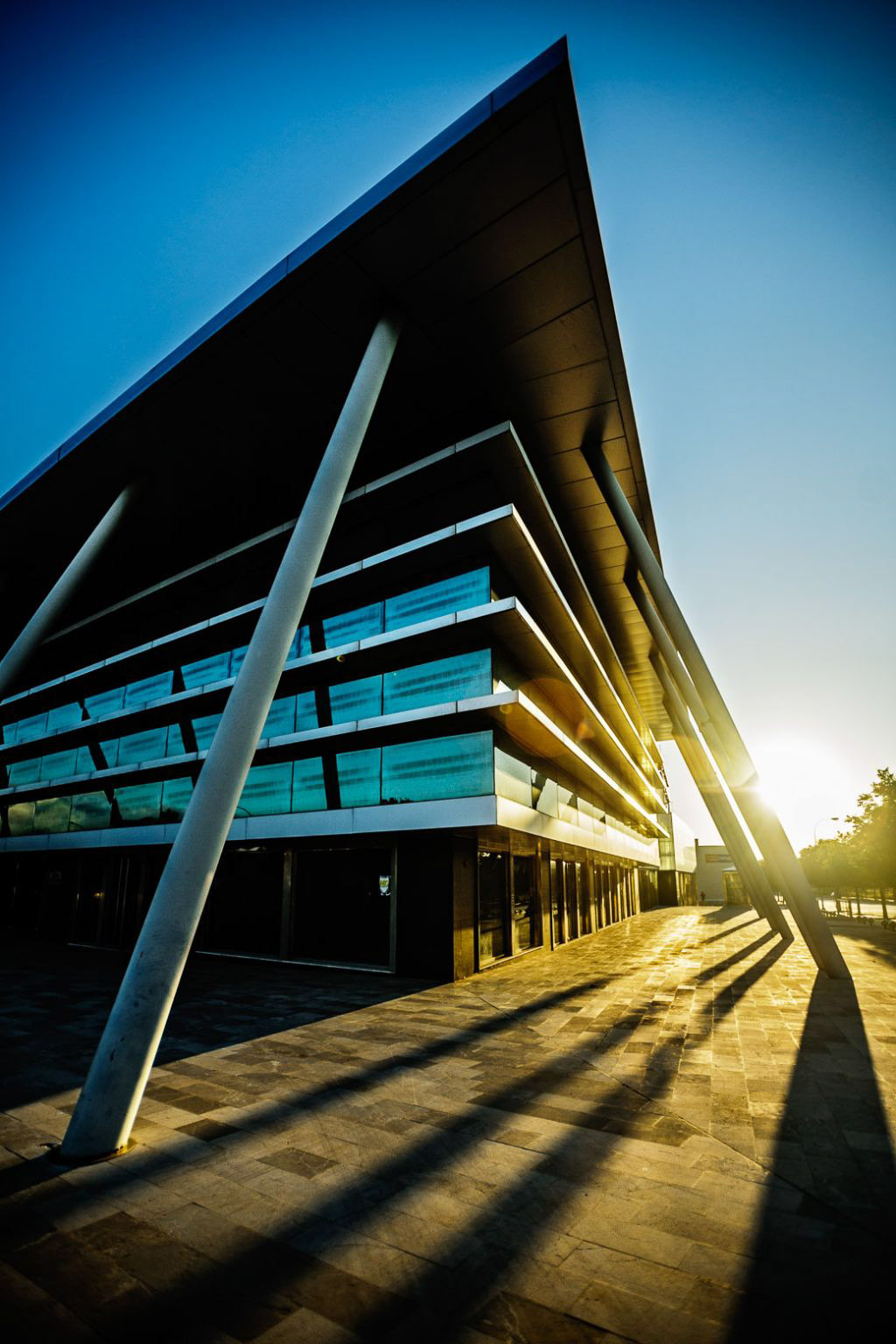
”Son Valentí” office building. Palma de Mallorca, Illes Balears. The property bubble was not only about the residential market. All around Spain it is easy to find empty or nearly empty office buildings like this one.
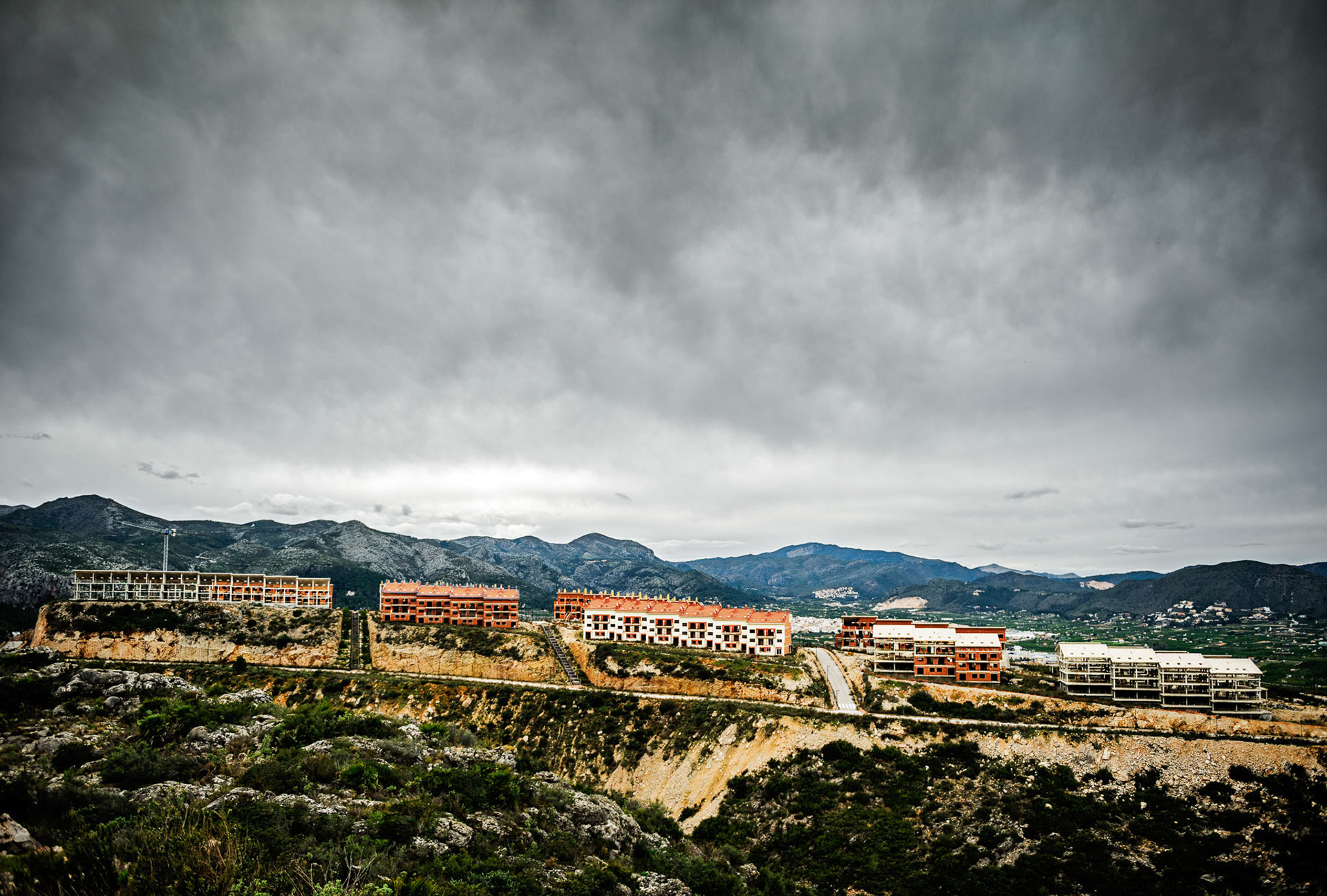
“Bellarotja” Residential Development. Pego, Alacant, Comunitat Valenciana. The original plan contemplated 2,000 houses and a golf course, but when the constructor went bankrupt in 2008, the project stopped abruptly. This was a hard blow on the City's economy because, in order to pay regular expenses, it had already spent €1.8 million from a fund that was explicitly aimed for the infrastructures affected by the development. However, Bellarotja has been abandoned and decaying for seven years, and there are no plans for finishing it, so no new infrastructures are needed. Thus, the City has to return the money from the fund, blocking the possibility of new investments.
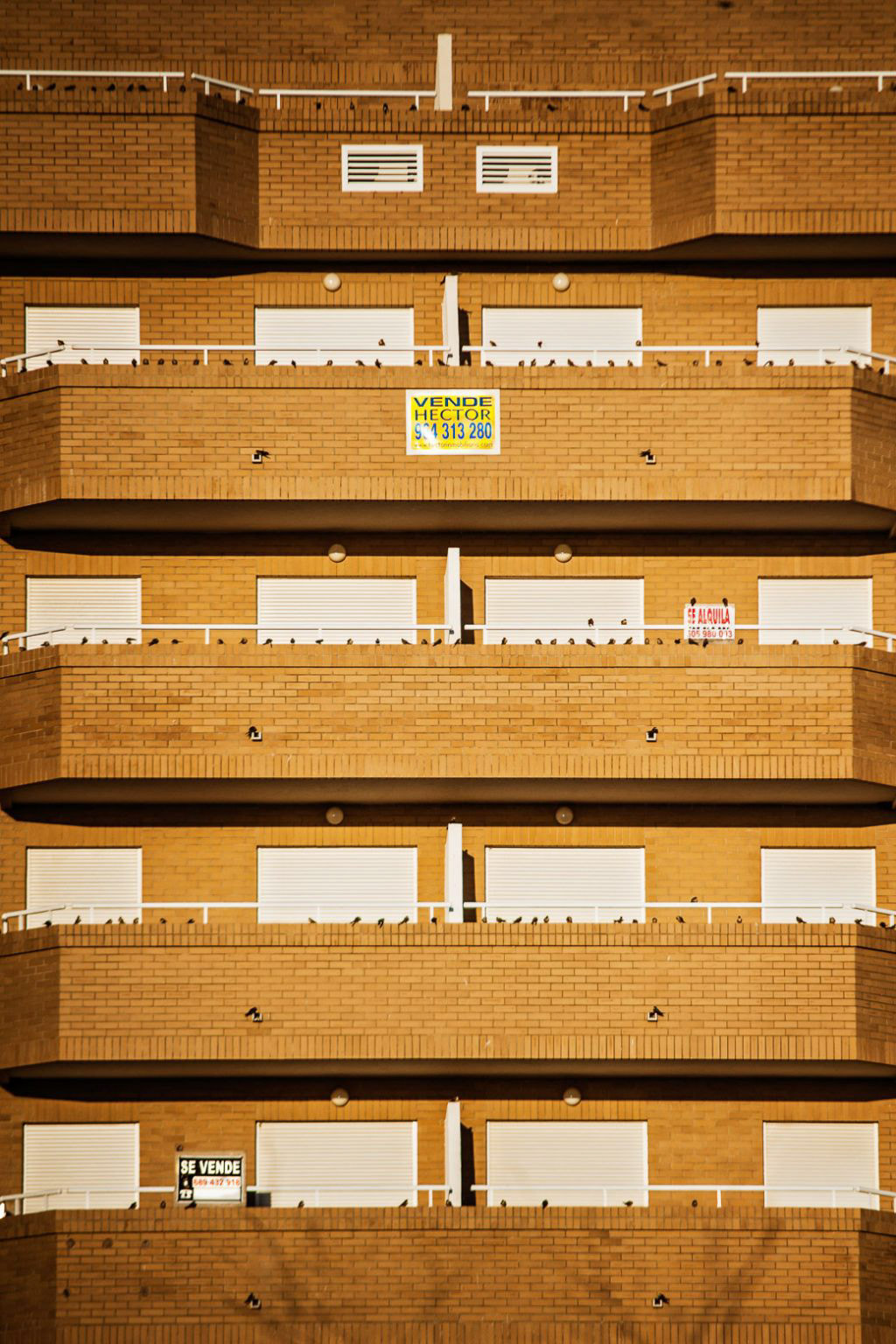
“Marina d'or Torre la sal” Residential Development. Cabanes, Castelló, Comunitat Valenciana. Of the 6,000 apartments on the drawing board only 650, spread over three blocks, saw the light of day. Very few were sold upon completion in 2007, so after five years the banks repossessed the apartments and sold them to one-third of the original price. The development is not officially acknowledged by the municipality, and therefore the streets are not maintained, which is a problem for the few families that live here all year round.
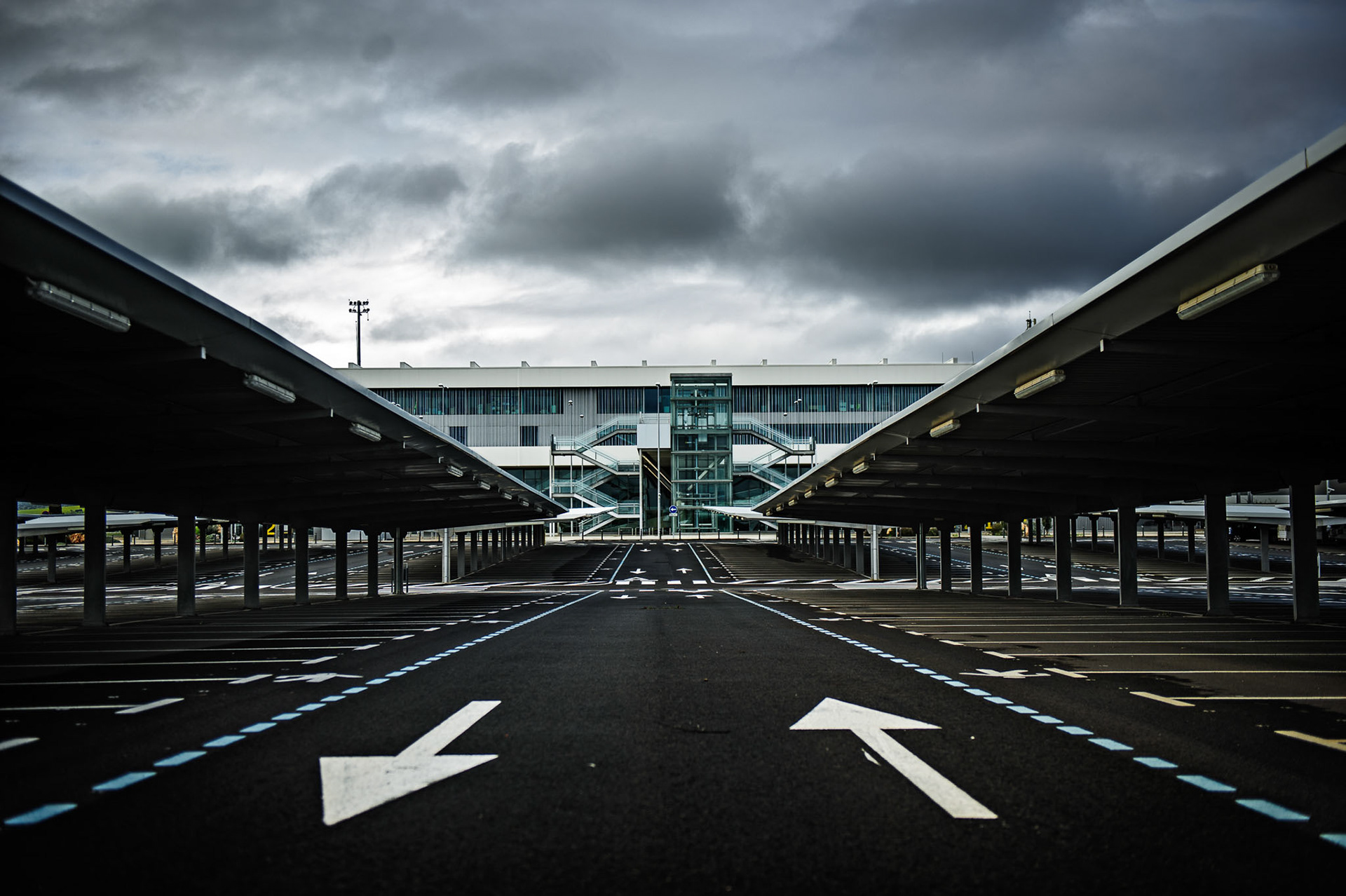
Ciudad Real Airport. Ciudad Real, Castilla-La Mancha. On the initiative of the regional government, a group of entrepreneurs built the airport for €1,100 million, all financed by Spain's first rescued savings bank “Caja Castilla-La Mancha”. With one of Europe's longest runways, the airport opened in December 2008. It had capacity for 5 million yearly passengers, but when the airport closed three years later only around 100,000 passengers had passed through it. The airport has been put for auction eight times with a starting price of €80 million.
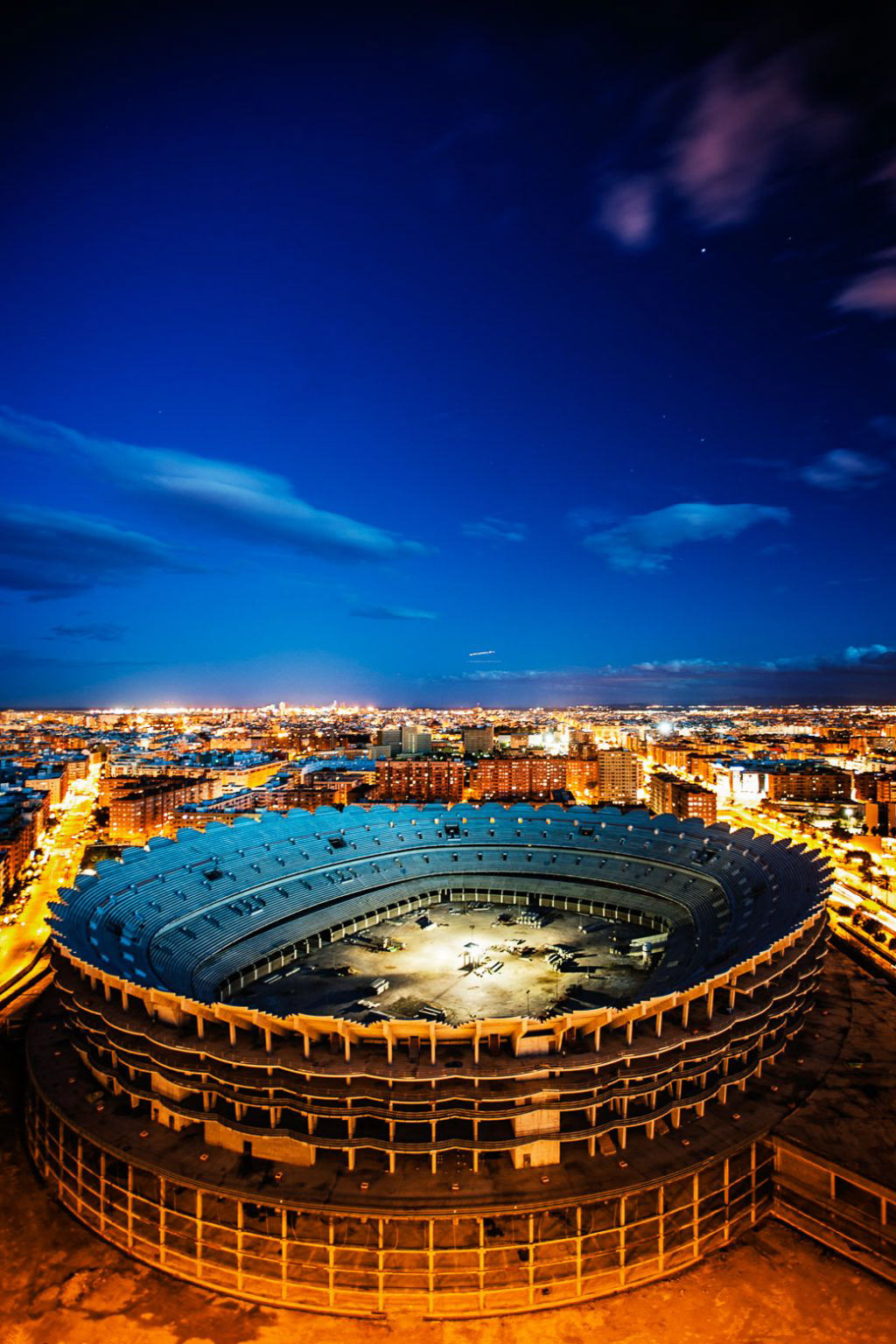
Nou Mestalla Stadium. València, Comunitat Valenciana. València C.F. wanted a new stadium that would give the club a place among the world's greatest. The cost of €344 million would be financed by the residential developments to be built on the site of the current stadium. However, the crash of the property market obliterated the operation, and the construction was stopped in 2009. In order to finish the stadium, €100 more million are needed, but the club has not the money for it. The club is currently being investigated by the European Union over alledged irregular public funding.
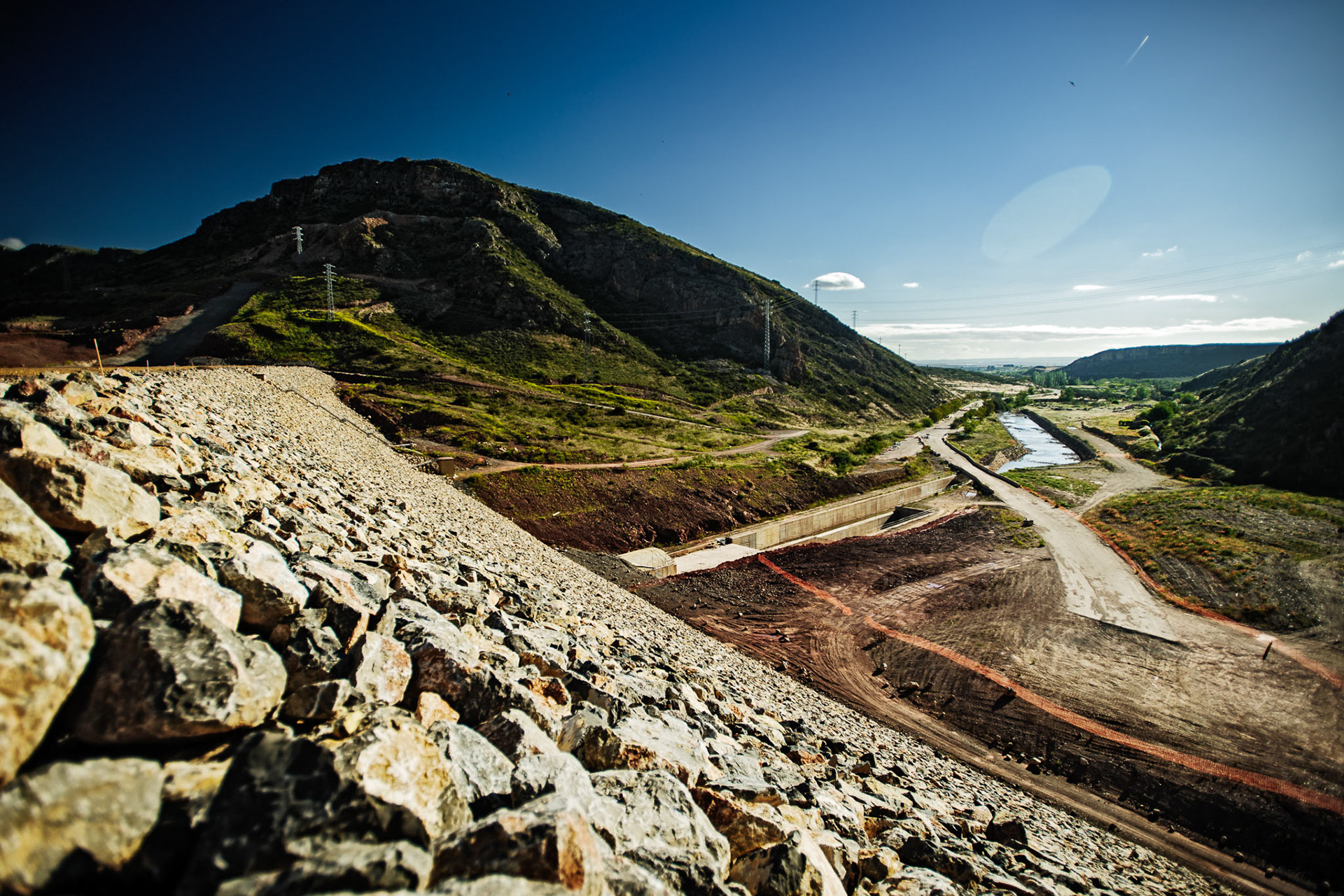
Mularroya Reservoir. La Almunia de Doña Godina, Zaragoza, Aragón. Despite that environmental organizations early claimed that the reservoir would affect negatively a large protected area in Mularroya, the construction started anyway in 2008. The environmental impact assessment (EIA) was revoked in 2009, but the construction continued until 2013, when the Spanish Supreme Court stopped the construction, and so it remains since then. In order to bypass the need of an EIA, the Spanish government declared the reservoir object of prime public interest, which might enable the construction to be resumed if compensatory measures are taken. However, the legal battle is not over as the environmentalists claim that this procedure can only be invoked under extraordinary circumstances, which is not the case here. Cost: €128 million plus overrun.
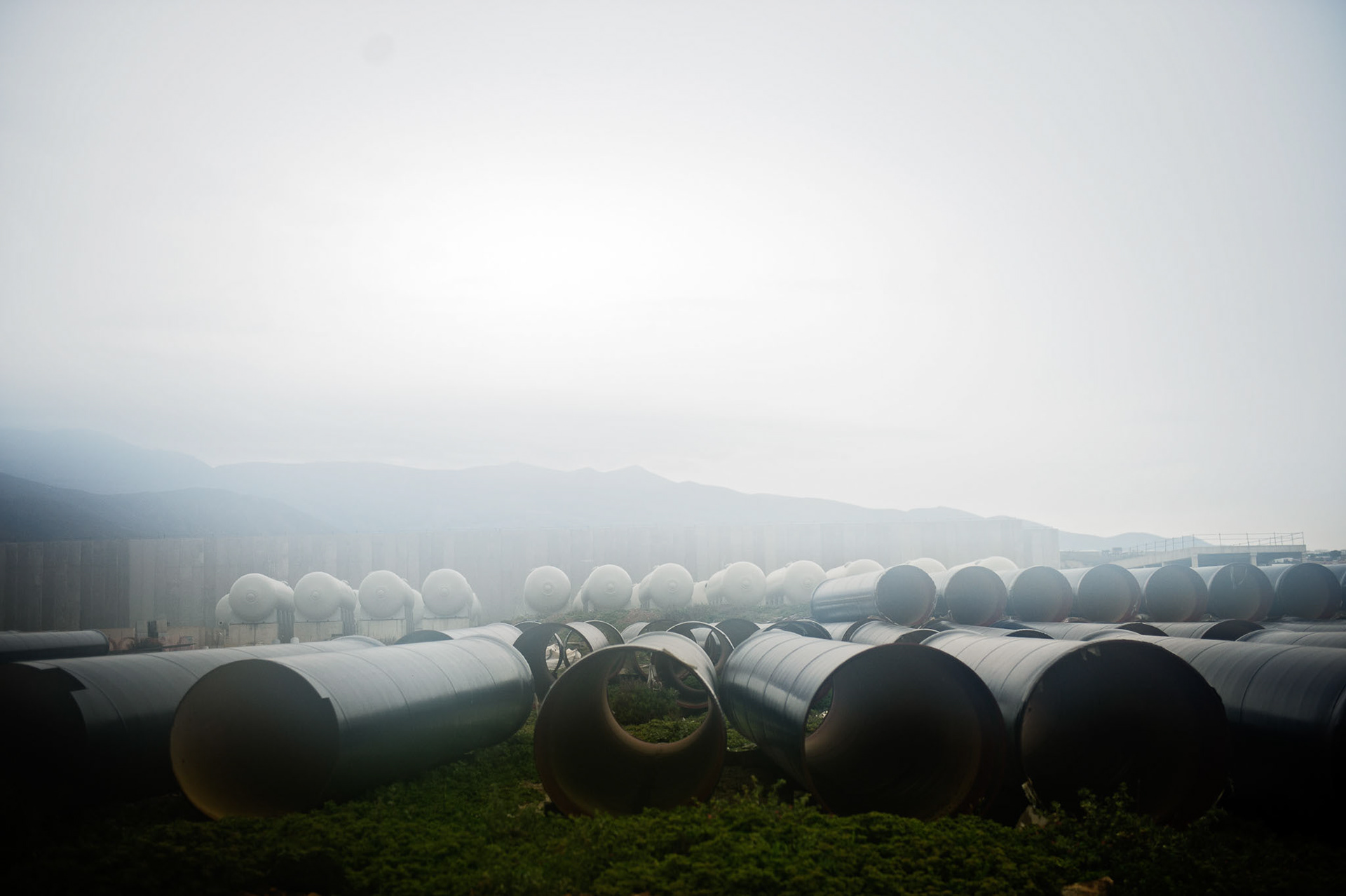
Campo de Dalías Desalination plant. Balerma, Almería, Andalucía. The construction of this plant began in 2008 and it should have been put into operation two years later, but it did not go as planned. In 2012 the construction works were stopped for over a year, and today the plant is not finished. If it is not up and running before the end of 2015, the money received from European funds will have to be returned. Total budget: €145 million.

“La Nueva Condomina” Residential Neighborhood. Murcia. It was meant to be a luxury residential complex in the outskirts of Murcia, but the bursting of the property bubble left a single, half-empty, apartment block... and a vast grid of deserted streets where illegal dumping and copper theft thrive. The constructor, the mayor and other members of the City Council are under investigation for corruption in connection with this project.
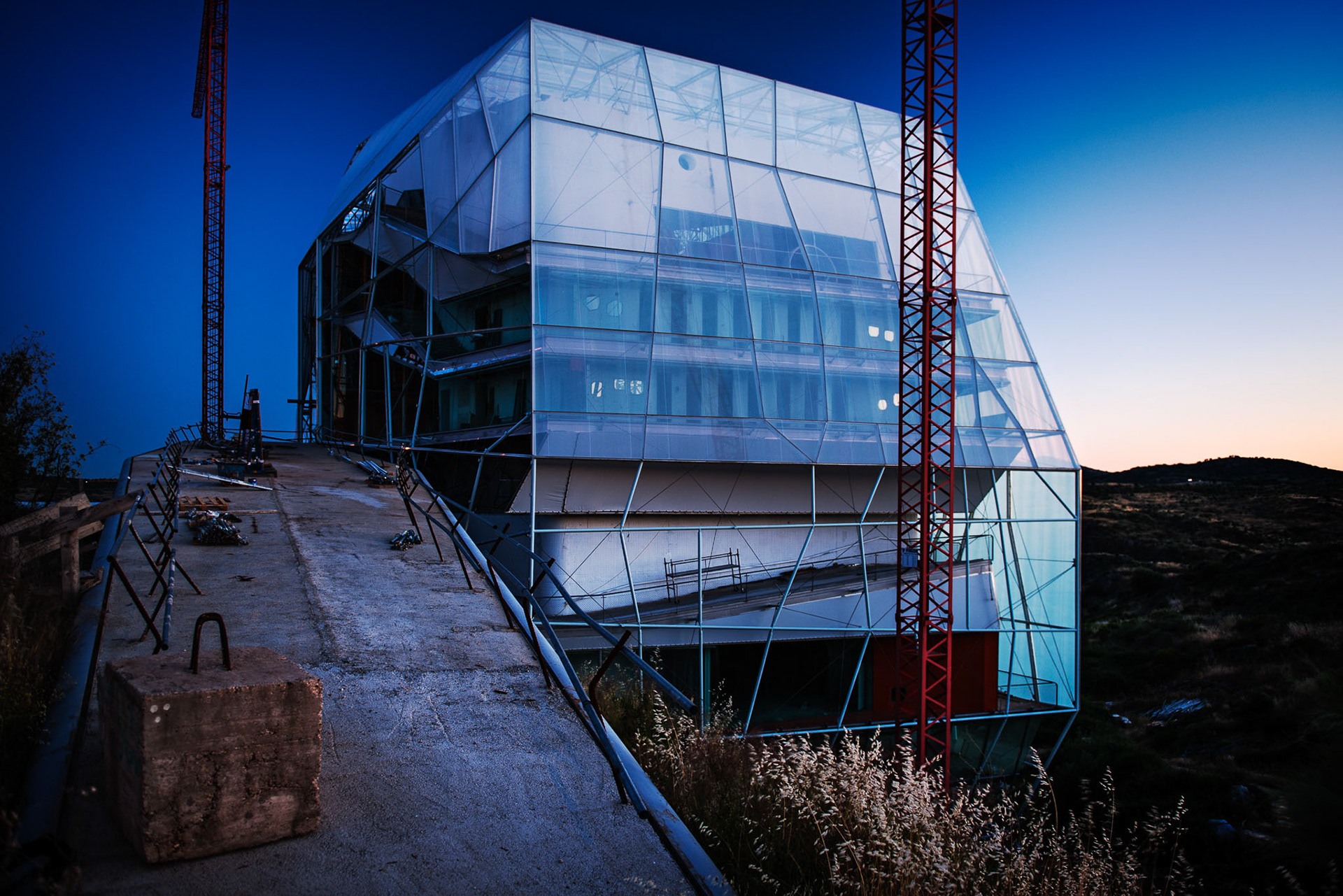
Plasencia Convention Center. Plasencia, Cáceres, Extremadura. In Extremadura there are already three profoundly under-utilized convention centers. Despite this, the regional government initiated the construction of another three that still have not been finished. In this one, €21 million have so far been invested (co-financed with European funds). With a delay of five years, it is supposed to open during 2015, but there are no scheduled events yet.

“Campo De Vuelo” Residential Development. Alhama de Murcia, Murcia. ”Which pilot has never dreamed of landing his plane on the runway of his community, and park it on his own private garden?”. With this slogan, the promoters wanted to attract buyers for the over 900 planned houses (159 with private hangar) that were to be constructed. However, only the runway and a handful of houses were ever finished.

“El Junquillo” Residential Development. Cáceres, Extremadura “El Junquillo” was to be a new, modern, and dynamic neighborhood in the outskirts of Cáceres, but due to bureaucratic problems with the local authorities, the few buildings that were built (one third of the total planned housing) were empty for several years. In 2013, the first families could finally move in, but in this block the vast majority of the apartments are still empty. Today, “El Junquillo” still lacks regular street maintenance and bus connection into the city.
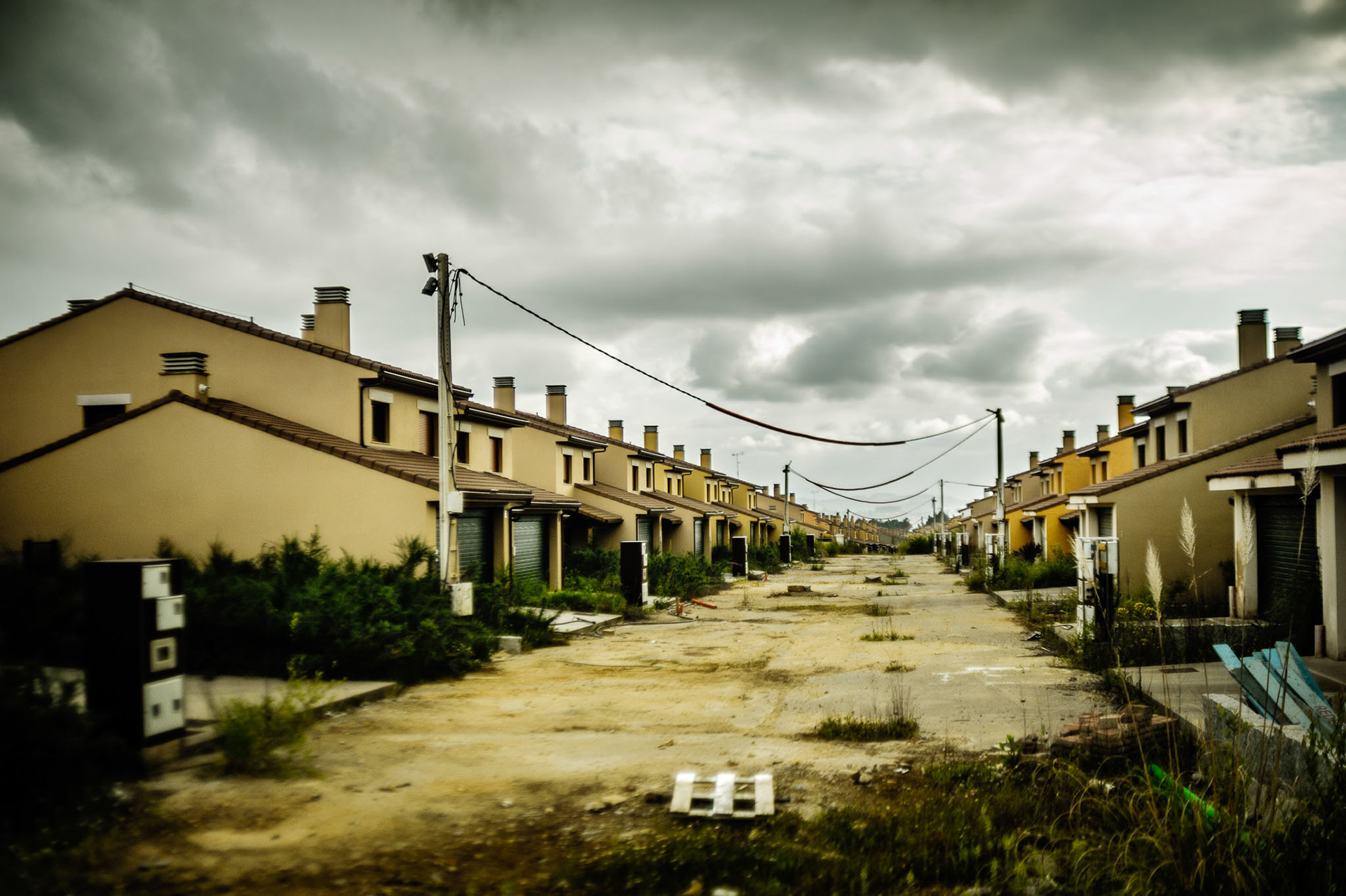
“Costa Miño Golf” Residential Development. Miño, A Coruña, Galicia. The construction of Costa Miño Golf began in 2005 during the golden years of the property bubble. A golf course, a hotel, a mall, and over 1,200 houses were to be built. When the construction was stopped in 2008, only the golf course and half of the houses had been built, and seven years later, the vast majority of them are still empty. Moreover, the Superior Regional Court has ruled the expropriation process to be illegal, forcing the City Council to pay around €25 million (five times its annual budget) to the affected owners, putting the town in a delicate economic situation.
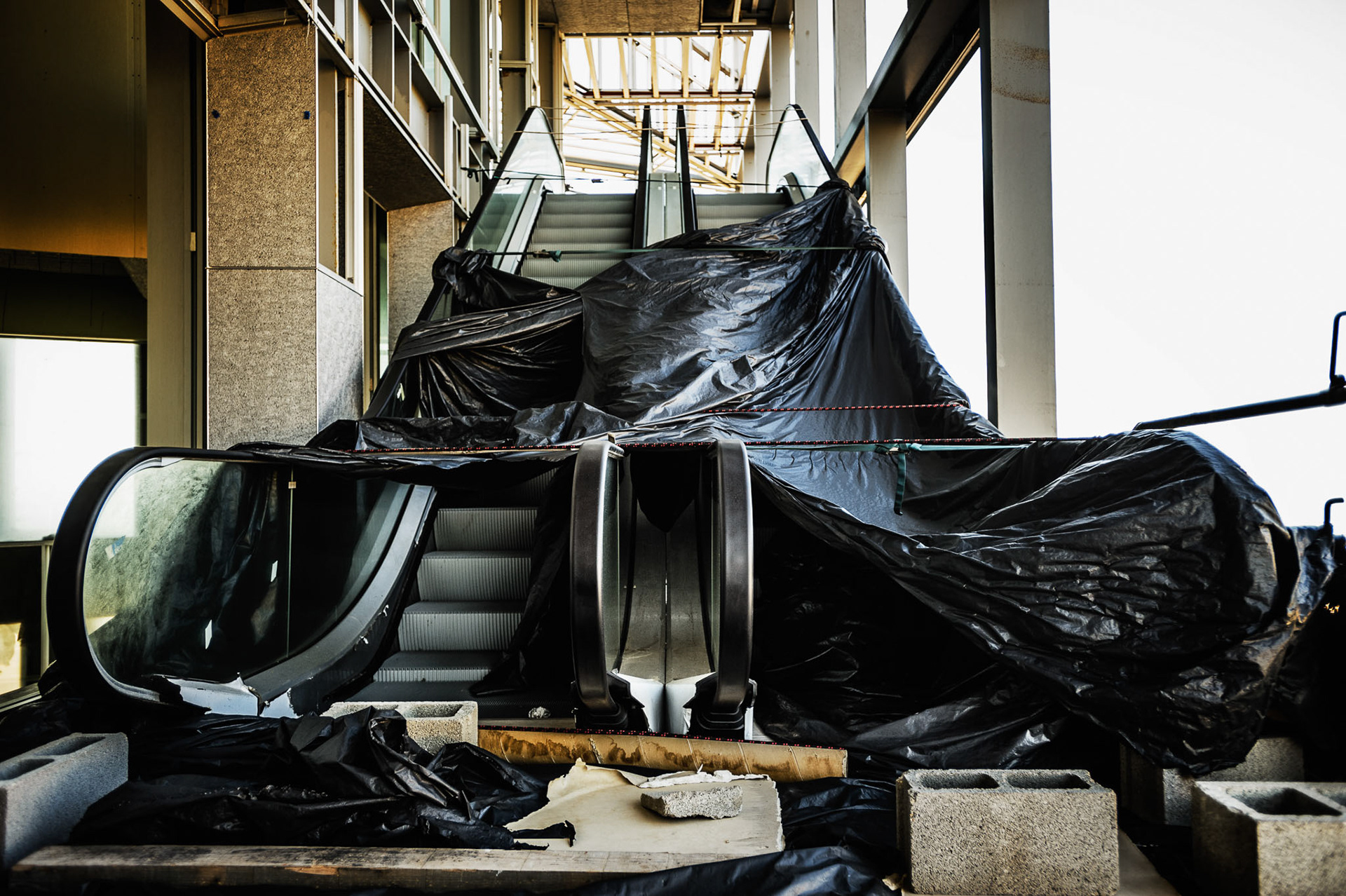
Convention Center and Hotel. Palma de Mallorca, Illes Balears. With the intention of diversifying the tourism market in Mallorca, the city of Palma began the construction of this 125 million euros convention center in 2008. When one of the private partners dropped out from the project in 2012, the construction works were stopped. During the subsequent two years, the authorities put up the complex for auction three times starting at €40.5 million, but no compliant bid was received. In 2014, the authorities resumed the works and during 2015 it has been put up for auction again.
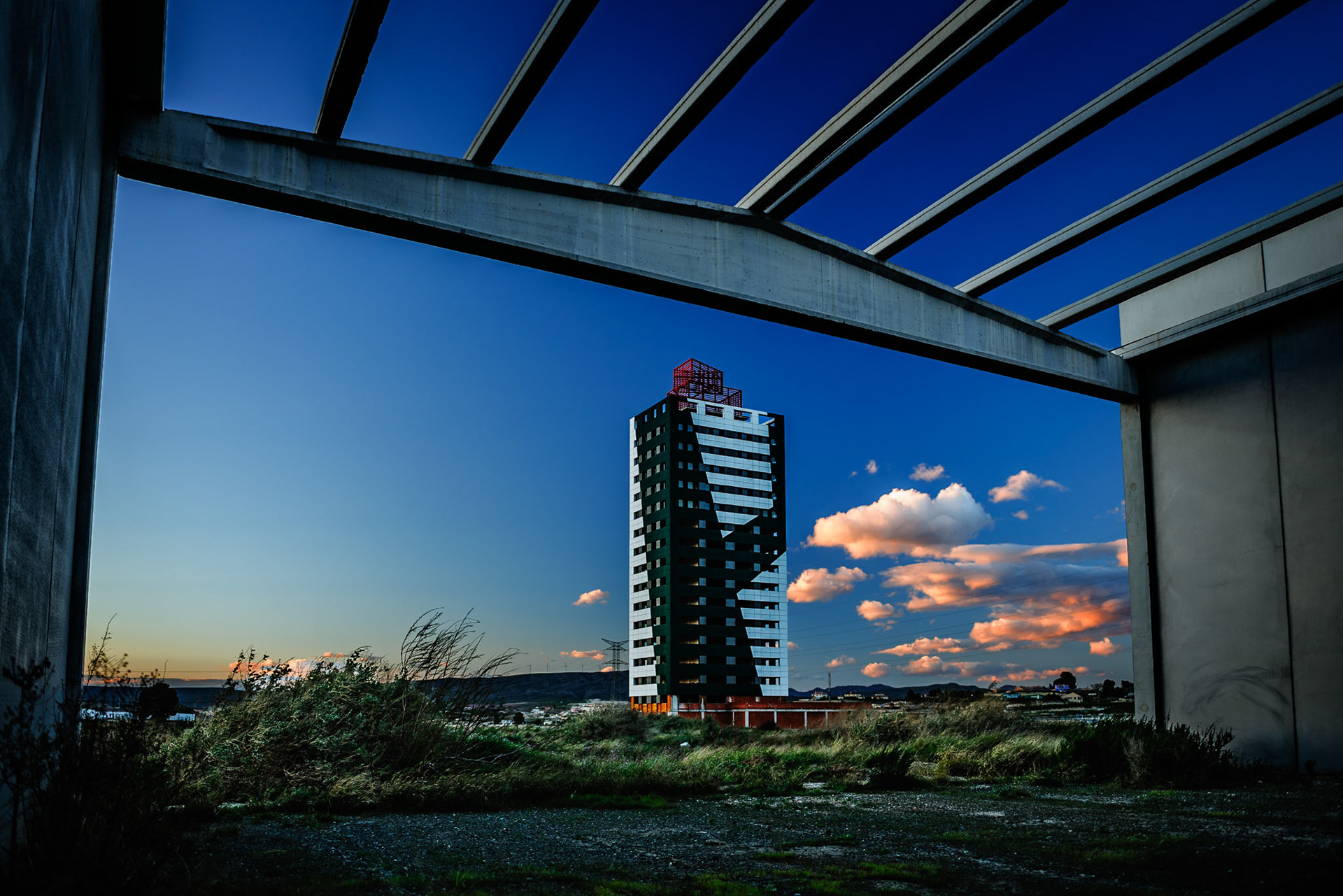
Industrial park ”Los Lucas”. Abarán, Murcia. When it was presented in 2006, ”Los Lucas” was meant to be the new economic motor of Abarán. Today it is a 468,000 m² surface covered by weeds and unfinished industrial premises, plus the empty shell 16-floor building.

Highway AP-71 León-Astorga. León, Castilla y León. Within civil engineering, it is widely acknowledged that, under normal circumstances, it is only sensible to build a highway if the average daily traffic (ADT) on a certain stretch exceeds 10,000 vehicles. Highway AP-71 from León to Astorga was opened in 2002 and has never reached more than half that figure (its ADT for 2014 was 4,000 vehicles). The concessionary filed for bankruptcy, so the construction cost of €115 million for this 37 km stretch will, most probably, be paid with public money through the rescue of the toll-highways in deficit.
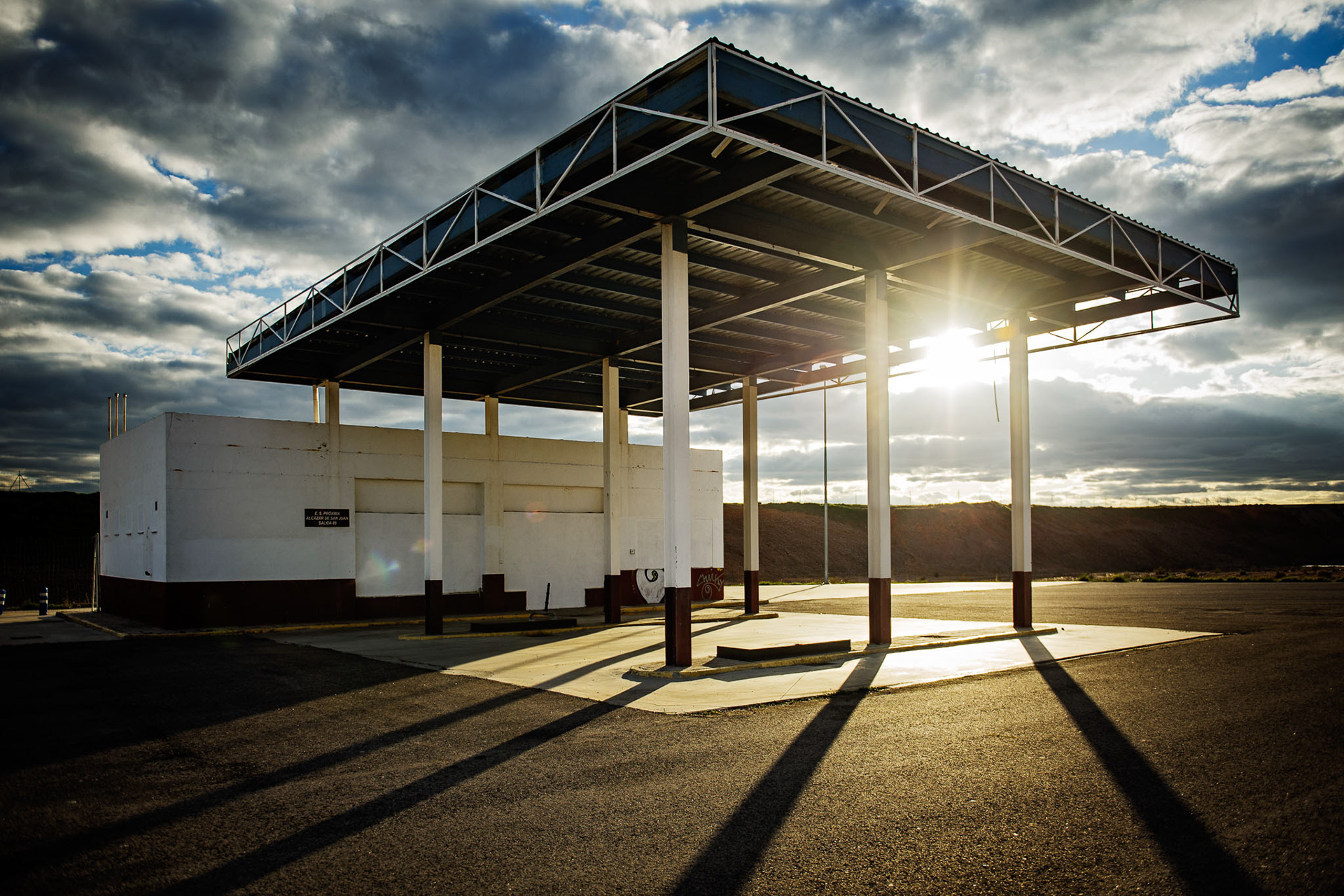
Highway CM-42. Alcázar de San Juan, Ciudad Real, Castilla-La Mancha. Ever since its opening in 2005, the traffic volume of this highway has been so low that almost none the gas stations along it have ever been profitable. This one has been closed and dismantled for more than six years.
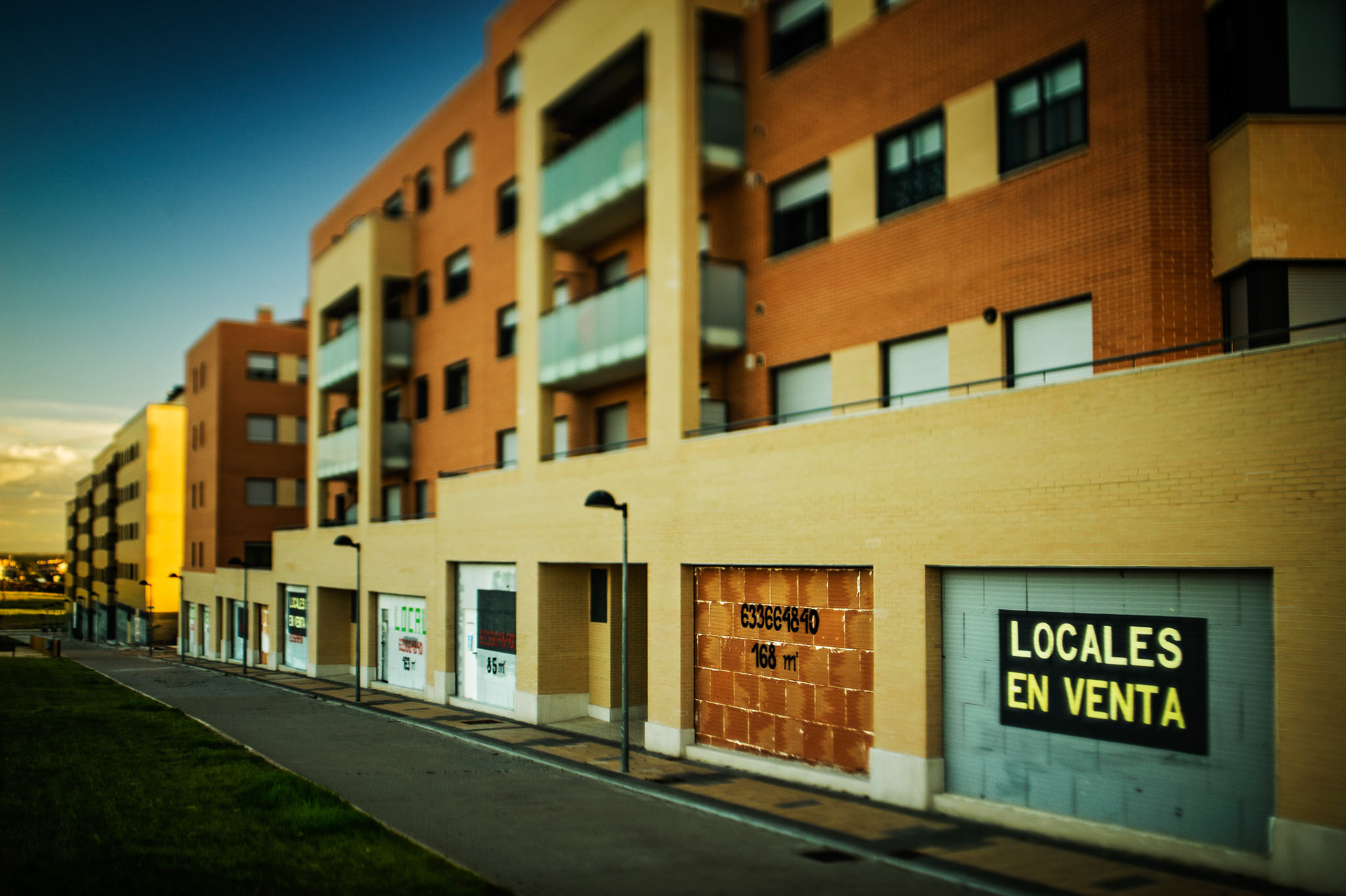
“Las Lomas de Arroyo” neighborhood. Arroyo de la Encomienda, Valladolid, Castilla y León. The recent construction boom has resulted in whole new neighborhoods like this one in the outskirts of many cities: A street grid encasing empty lots and new buildings. While in some of the buildings the occupancy rate of residential space has reached an acceptable level, the occupancy of the new commercial spaces is consistently very low.
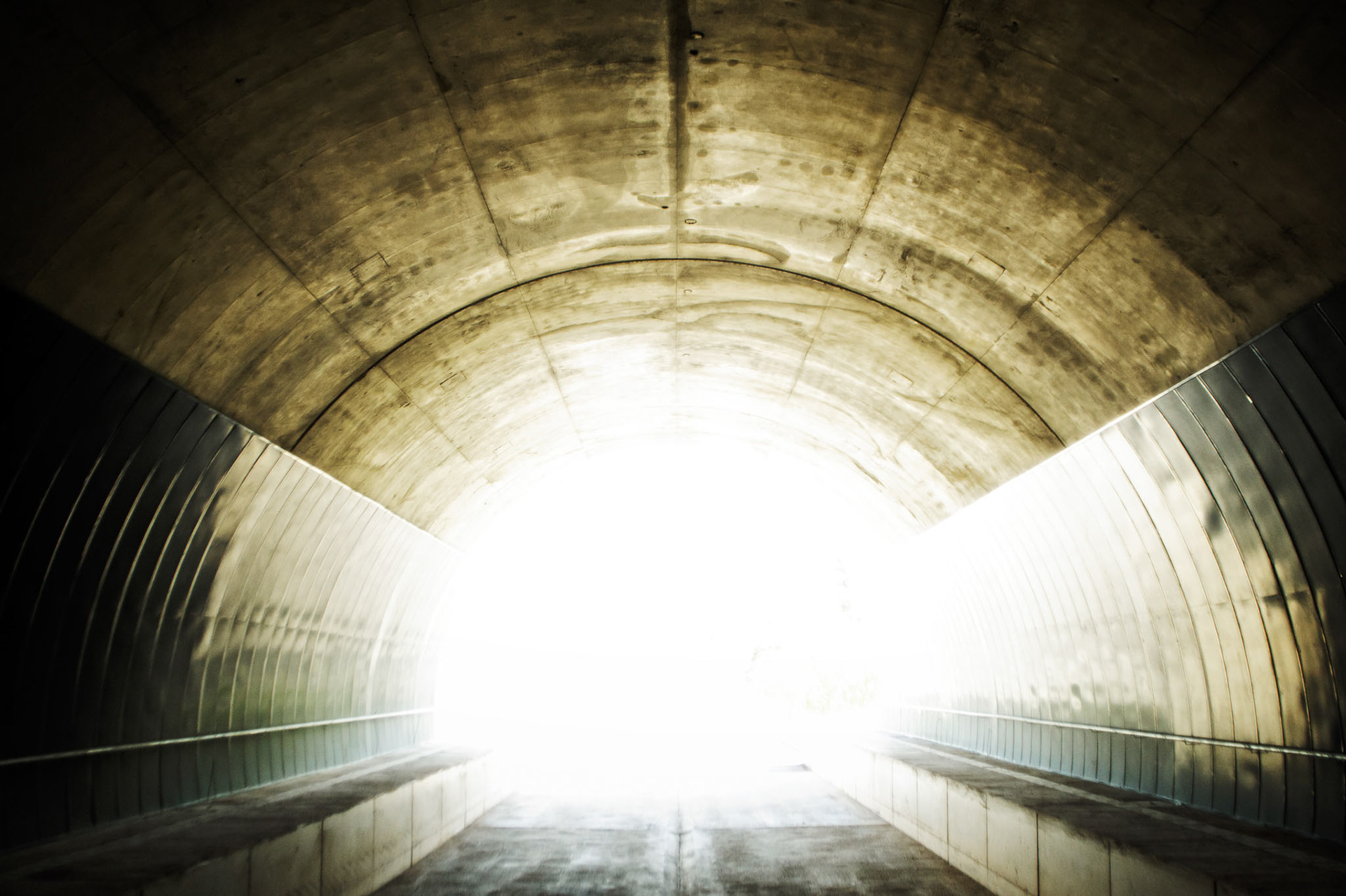
Pajares Base Tunnel. La Robla, León, Castilla y León. The perforation of these 25 km-long tunnels began in 2004. Although once finished they will be the seventh largest in the world, only six months were devoted to pre-studies. Moreover, the environmental impact assessment did not take into account the ground water. It was not until 2006, after several incidents with water pouring from the walls of the galleries, that the first hydrogeological study was performed. The result: 20 aquifers had been perforated, causing subterranean water transfer between the north and south sides of the mountains, which, in turn, affected the water supply at the surface. The cost of this mess, up to now, amounts to €3.2 billion (nearly half of it are EU-funds). The objective is to open one of the tunnels before the general elections of 2015, for the other one there is no final solution in sight.

Castelló Airport. Cabanes, Castelló, Comunitat Valenciana. Although it did not have the permits to operate, the airport was officially inaugurated just before local and regional elections in 2011. However, the airport remained closed for almost four years before, in the wake of new elections, it finally opened for traffic. After a few months of receiving sporadic private flights, the first regular connections are scheduled for late 2015. The regional government granted €25 million to the company that took the 20-year concession of the airport, amount that should be added to the almost €170 million of public money spent on its construction, equipment, and various sponsorship deals over the years. The €300,000 sculpture depicts Carlos Fabra, longtime head of the provincial government and driving force behind the airport. For a long time it was the only plane in the airport.
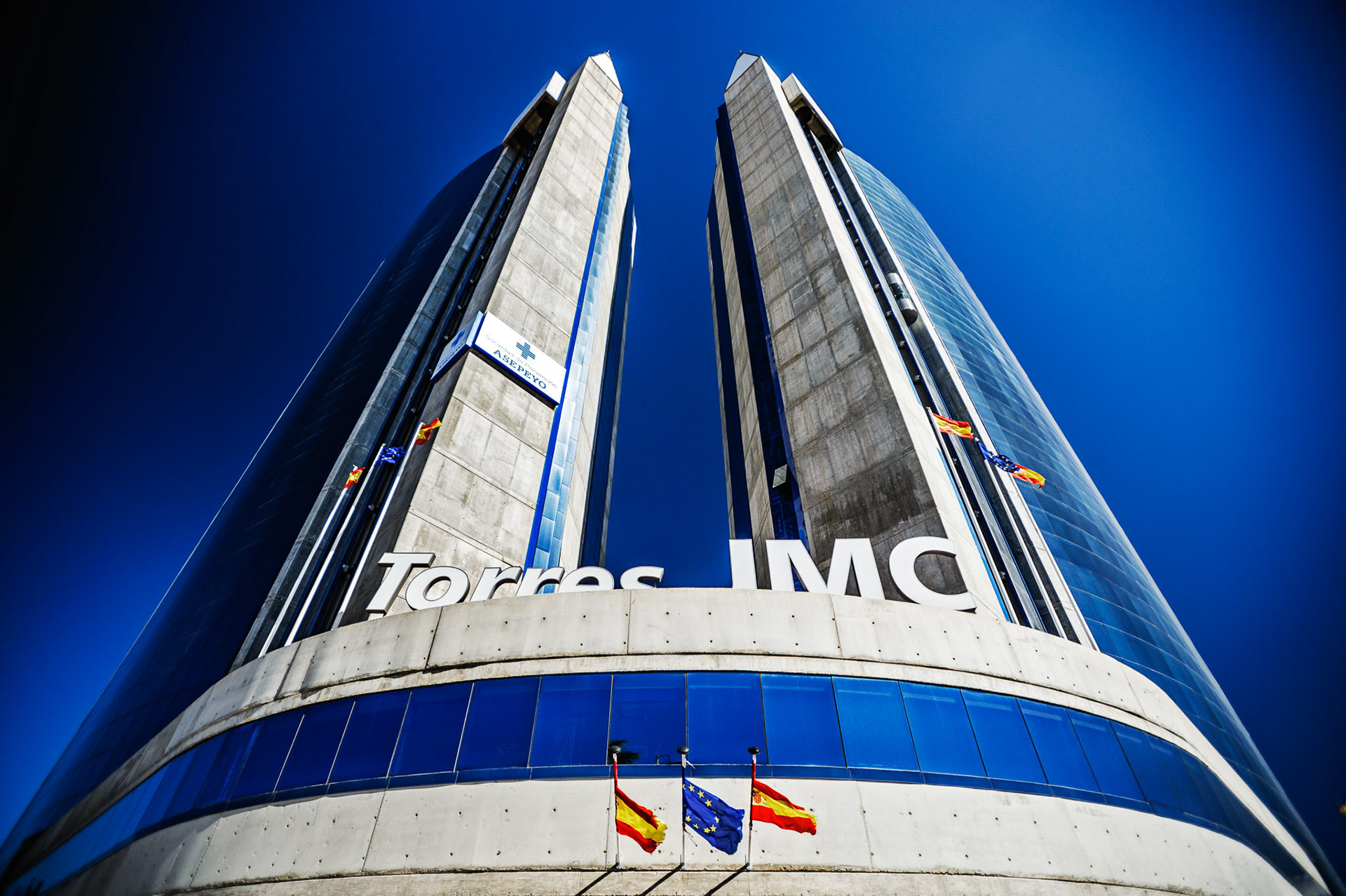
“Torres Gemelas Fuertes”, office space. (Formerly known as ”Torres JMC”) Murcia. By building the city's highest towers and baptizing them with his own initials, constructor Jesús Mengual Camacho wanted to be a part of what was to be the new dawn of the city. From here, the views over Murcia are stunning, however, not many people are around to enjoy them, most of its 46 floors are empty. From 2014 the towers have a new owner.
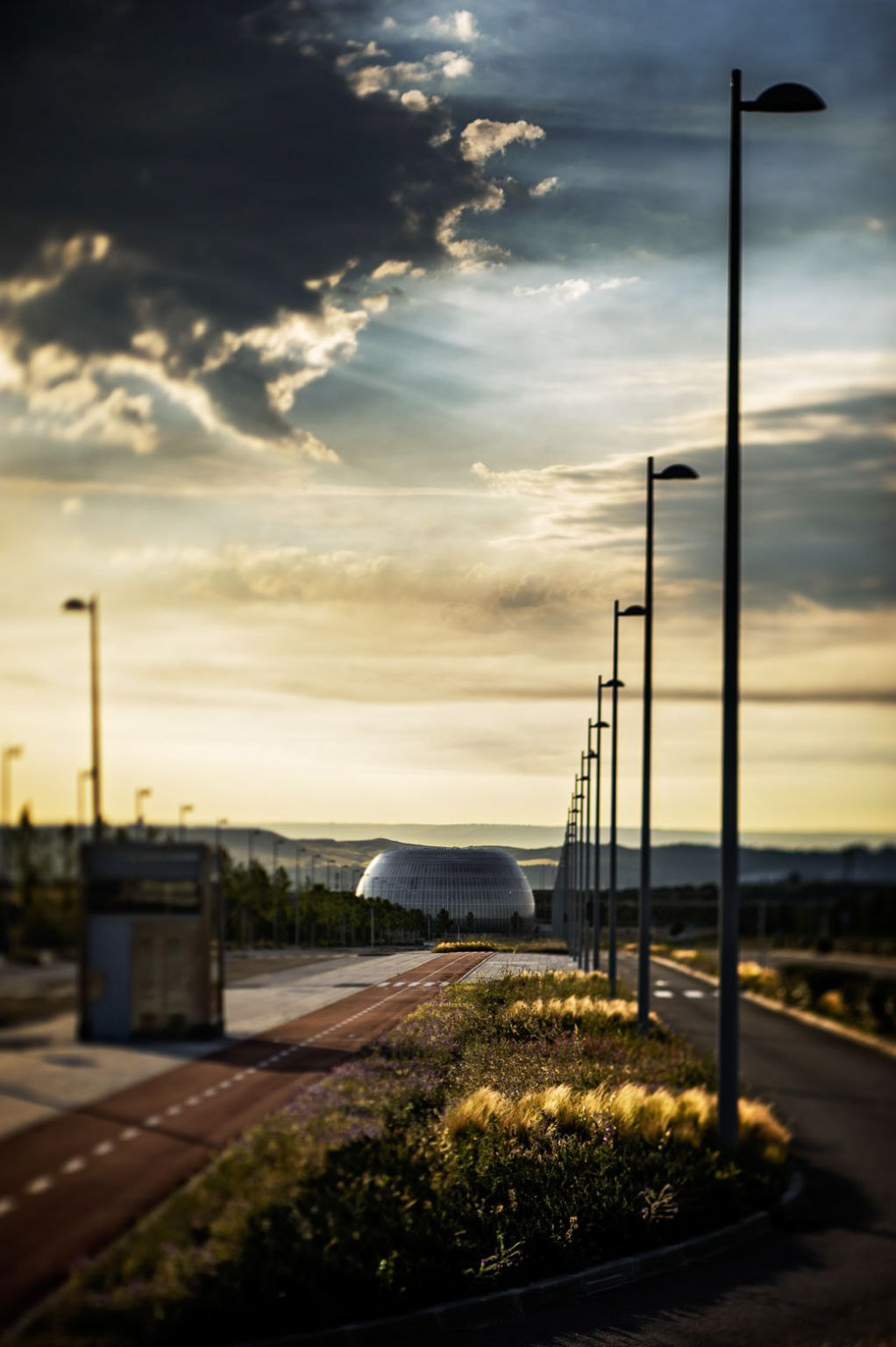
City of Justice. Madrid. It was planned to be a €500 million euros complex where 15 buildings designed by the world's greatest architects would integrate all elements of Madrid's judicial system. The construction was stopped in 2010 after a total investment of €329 million. The project was definitely cancelled in 2013, but right before the local and regional elections of 2015, it was relaunched in a different shape, however, the new regional administration has confirmed its cancellation.
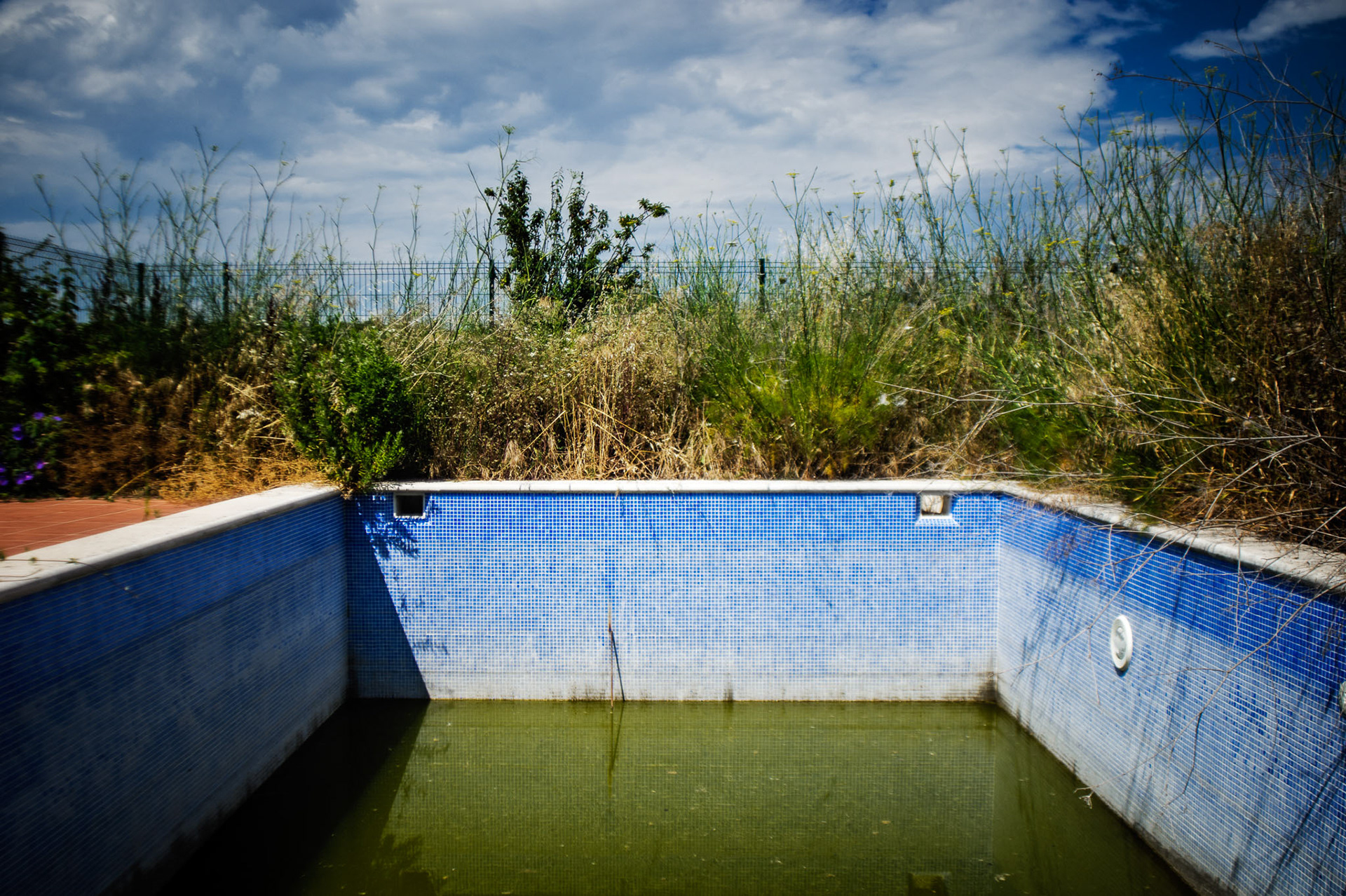
“Molins de Vent” residential development. Montuïri, Illes Balears. “Living in peacefulness” was the slogan of this empty block of 18 apartments in the heart of rural Mallorca, but no one wanted to.
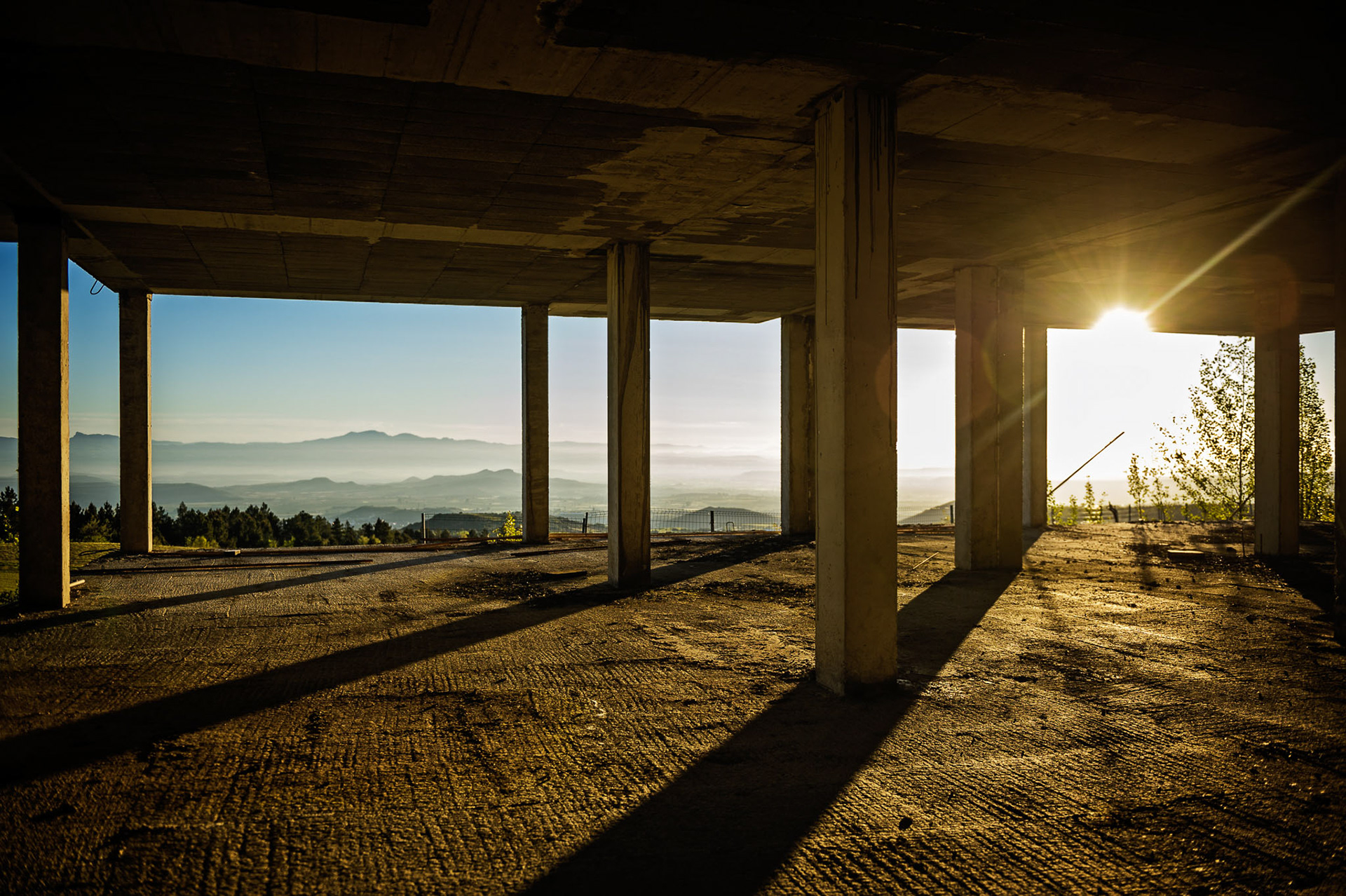
”Moncalvillo Green Casas & Golf” residential development. Sojuela, La Rioja. With its almost 1,100 new houses, this complex was supposed to increase by 30 times the population of the small village of Sojuela. When the constructor filed for bankruptcy in 2008, only the 18-hole golf course and around half of the houses had been built. The golf course is open, but the majority of the houses are still empty
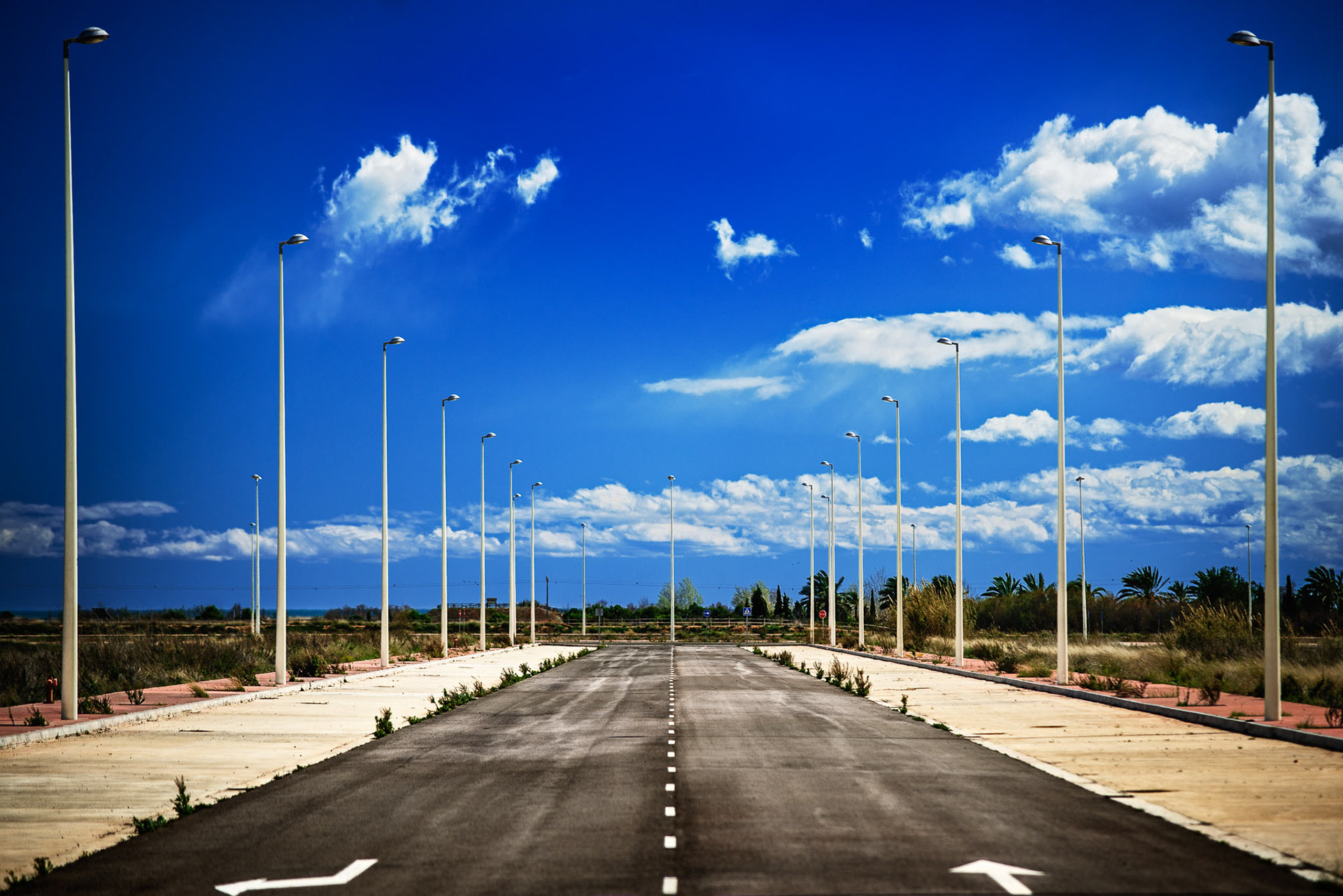
Industrial Park “Parc Sagunt”. Sagunt, València, Comunitat Valenciana. Spain's finance minister and the regional president presented in 2002 the project for “the largest industrial park in Europe”. With a budget of €252 million, “Parc Sagunt” was to be built in two phases, occupy 15 million m² and create 30,000 jobs. The authorities invested 150 million euros in the first phase, but after its opening in 2007, only three companies established themselves there. The plans for the second phase are frozen.
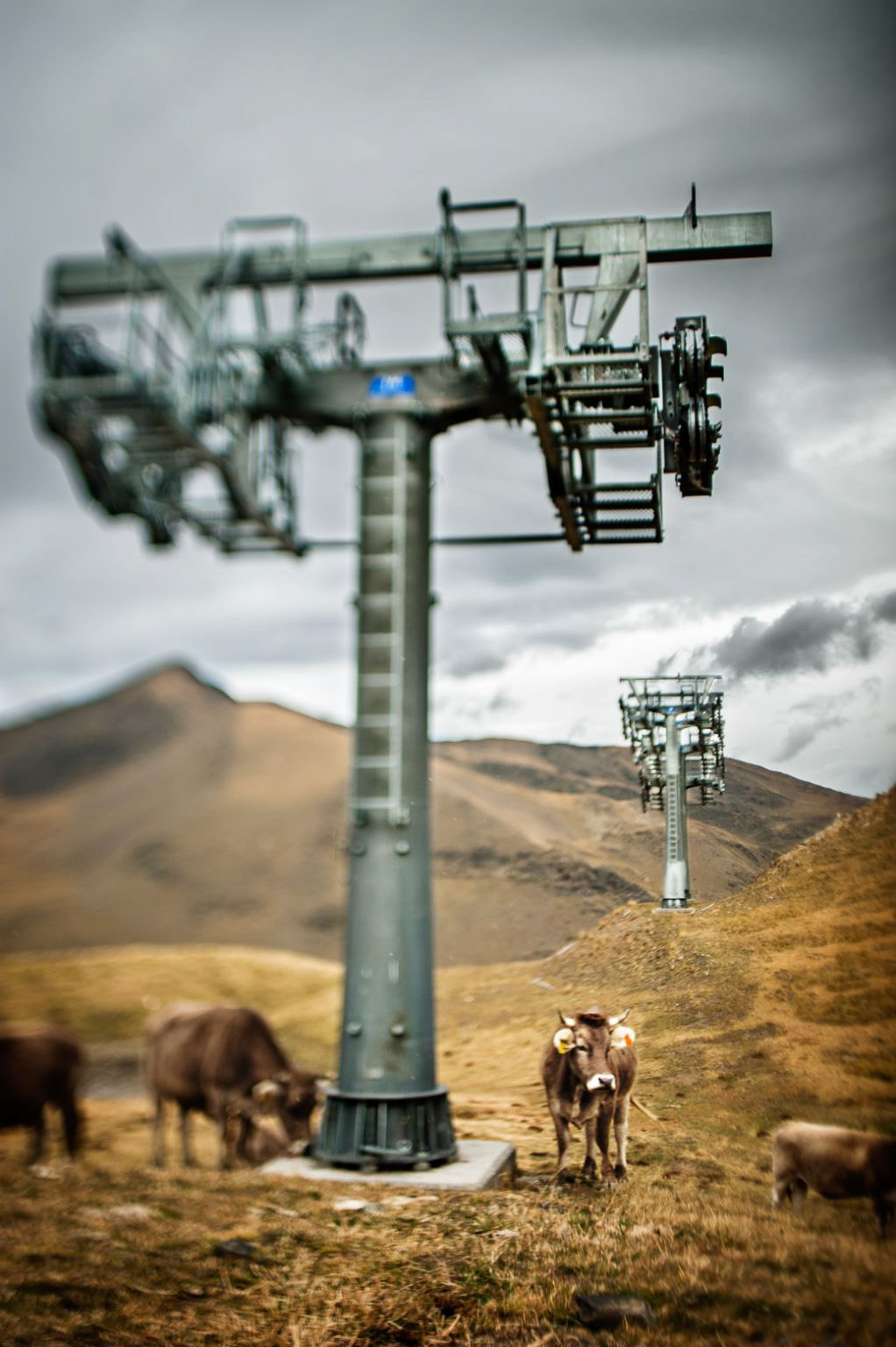
Vallfosca Mountain Resort. Torre de Cabdella, Lleida, Catalunya. The plan was to build more than 1,000 apartments, a golf course and a ski station by Espui, a small village of 200 inhabitants, in the Pyrenees. When the property bubble bursted, only a handful of apartments had been finished. The rest just became part of the landscape.
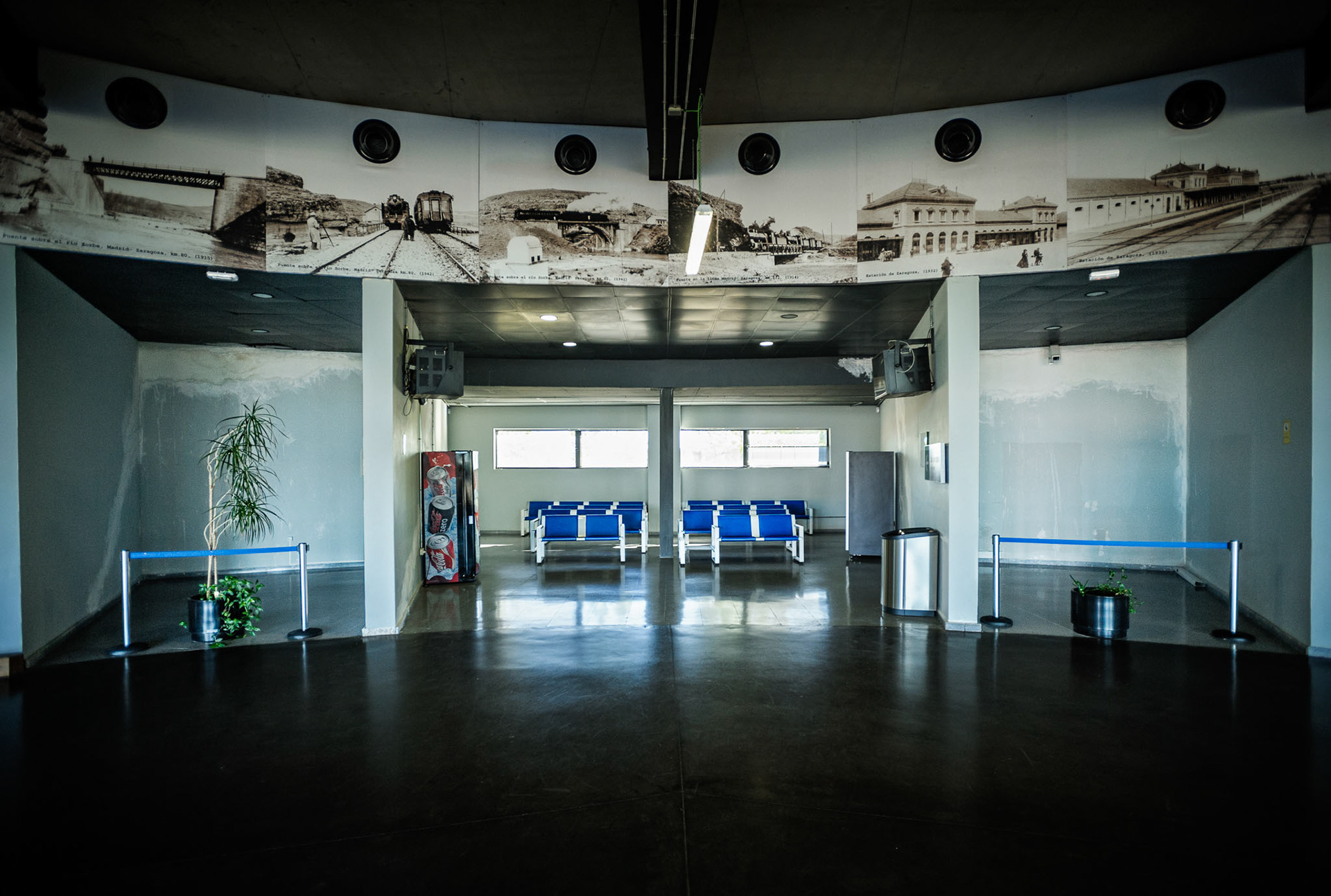
Guadalajara-Yebes High-speed rail station. Yebes, Guadalajara, Castilla-La Mancha. This station was constructed in the middle of nowhere on a desert landscape, 9 km away from the province capital Guadalajara. It was the perfect excuse for planning several large scale developments that were supposed to be able to host 92,000 people, who could high-speed commute to Madrid. But since only around 4,400 people have actually moved in, there is no high-speed commuting service to Madrid. The station has 85 daily passengers. Its cost: €12 million.
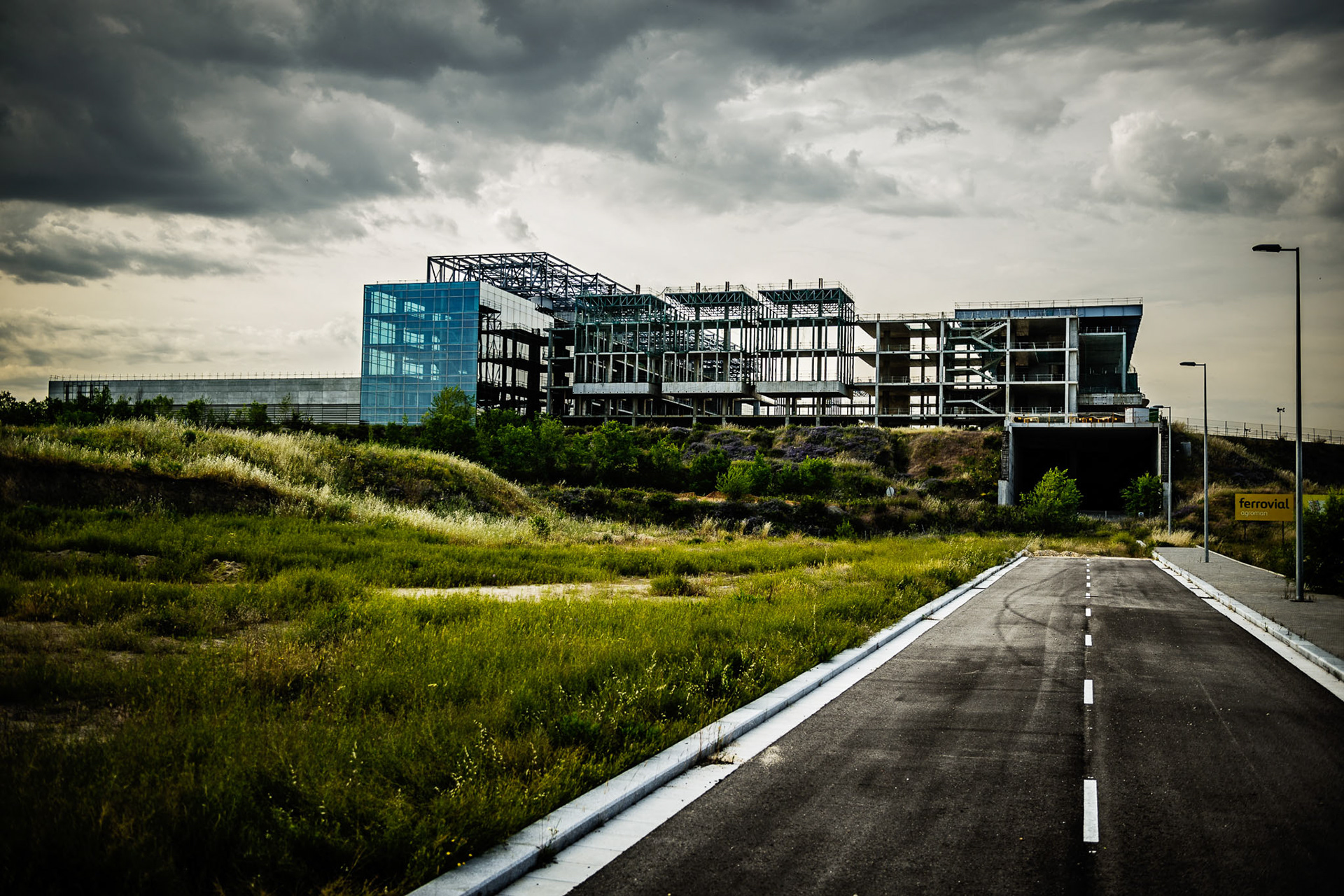
Olympic Aquatic Center. Madrid. The Aquatic Center began to be built in 2004 for Madrid's first of three consecutive olympic bids (2012, 2016, and 2020). It should have been finished in 2006, but Madrid's olympic defeats slowed down the construction pace until the works completely stopped in 2010. Through the years, the budget has increased to 192 million euros, and now 93 million are needed in order to finish it. The City recently estimated its market value to be €23 million.
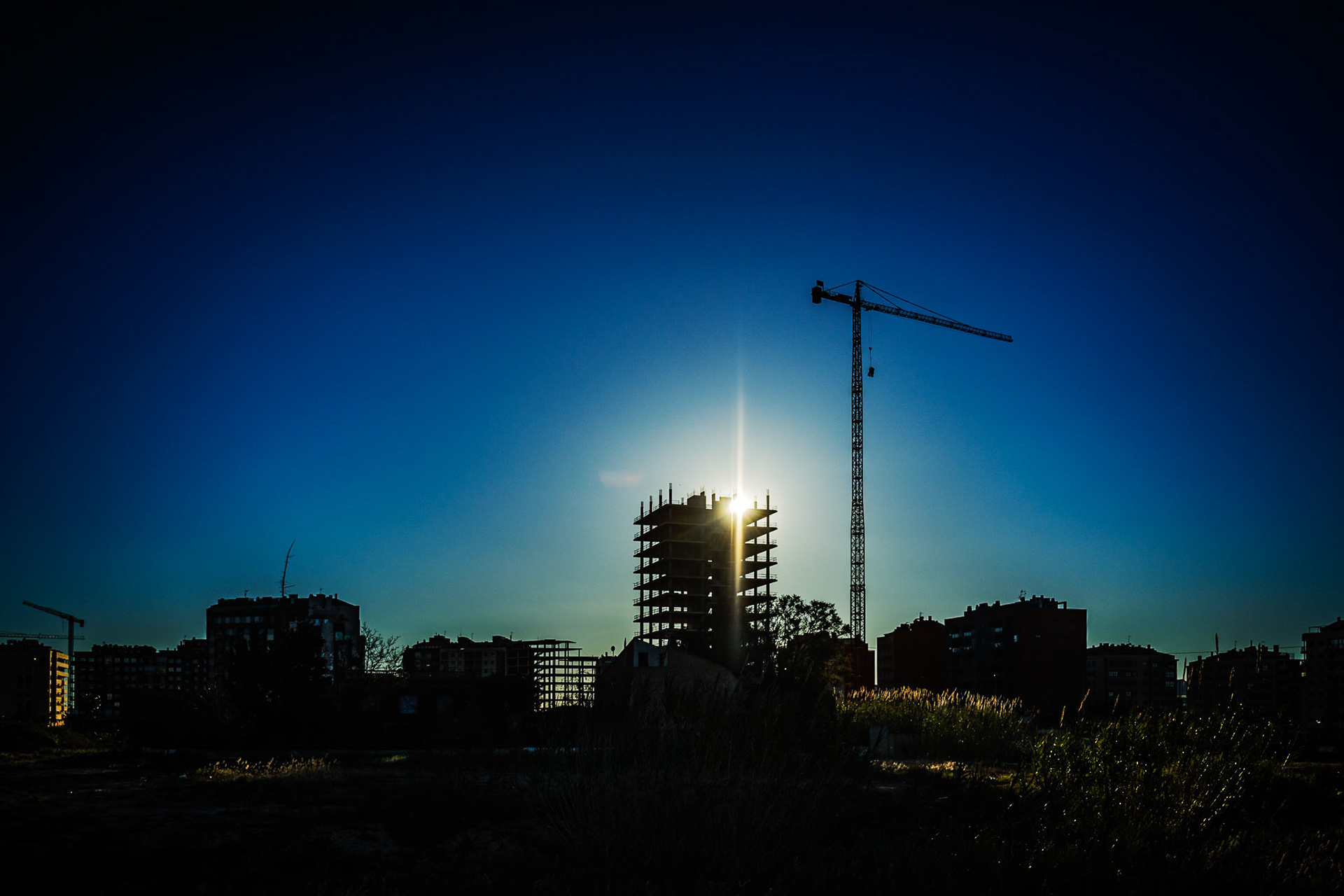
Northern Expansion of the City. Murcia. The northern sector was chosen canalize the growth of the city, by building more than 30,000 apartments in this district, that during the boom years became the most expensive of the city. In some areas, most of the buildings are finished (some inhabited, some not), but other areas are just a patchwork of empty lots and half-constructed buildings.

Nursing Home for the Elderly. Cañete, Cuenca, Castilla-La Mancha. After an investment of more than €4 million, the nursing home was finished in 2010, but could not open because there was no budget for the equipment. Since then, it remains closed. The numerous acts of vandalism it suffers accelerate its deterioration. Two nearby villages have also this exact same problem.
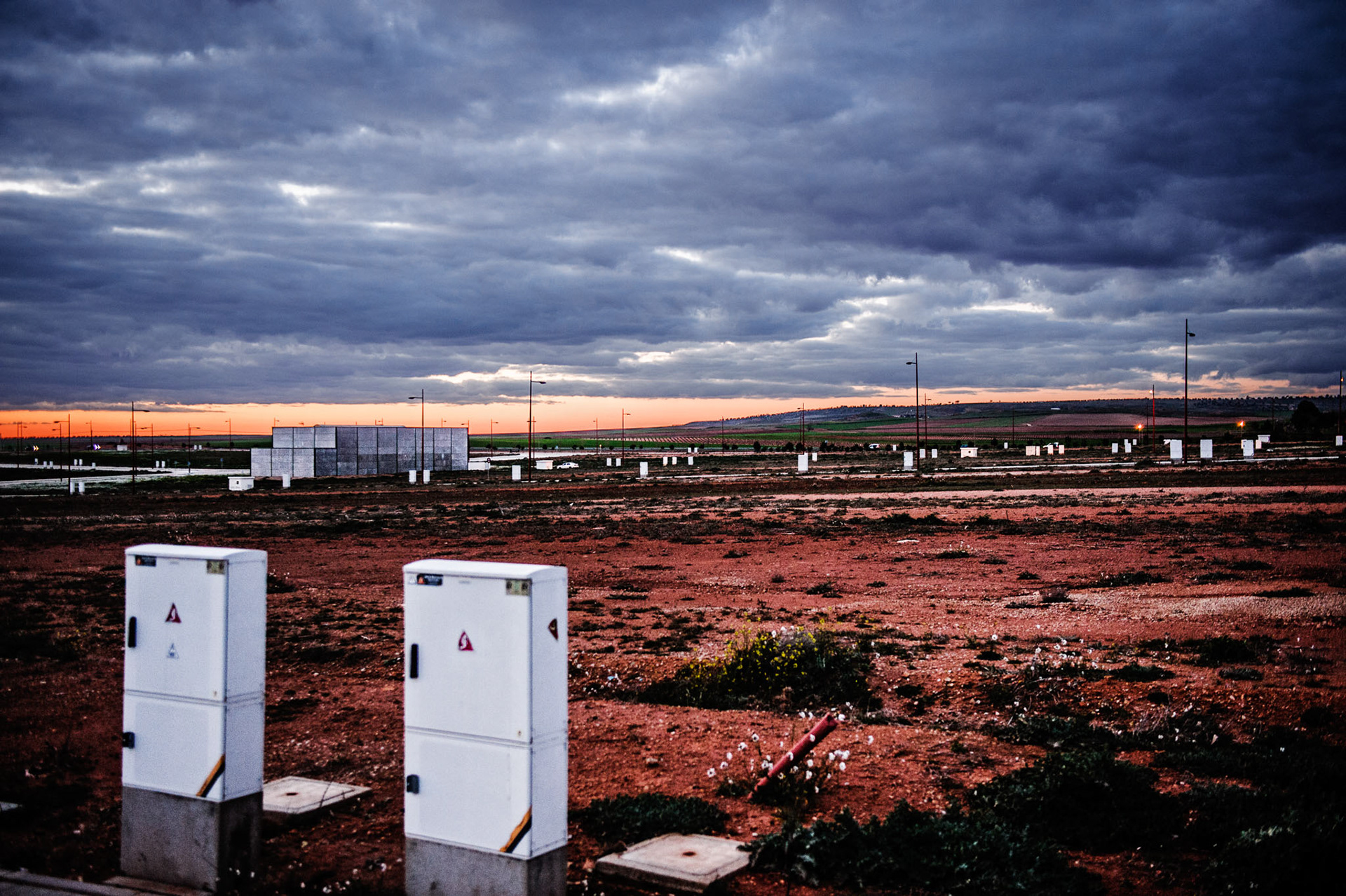
Expansion of the industrial park “Pozo Hondo”. Campo de Criptana, Ciudad Real, Castilla-La Mancha. When it was inaugurated in 2010, these over 270,000 m² of industrial land were to harbor more than 200 new companies that would bring new economic life into the village. Five years later, only a few companies have established themselves here. Cost: €16.5 million.
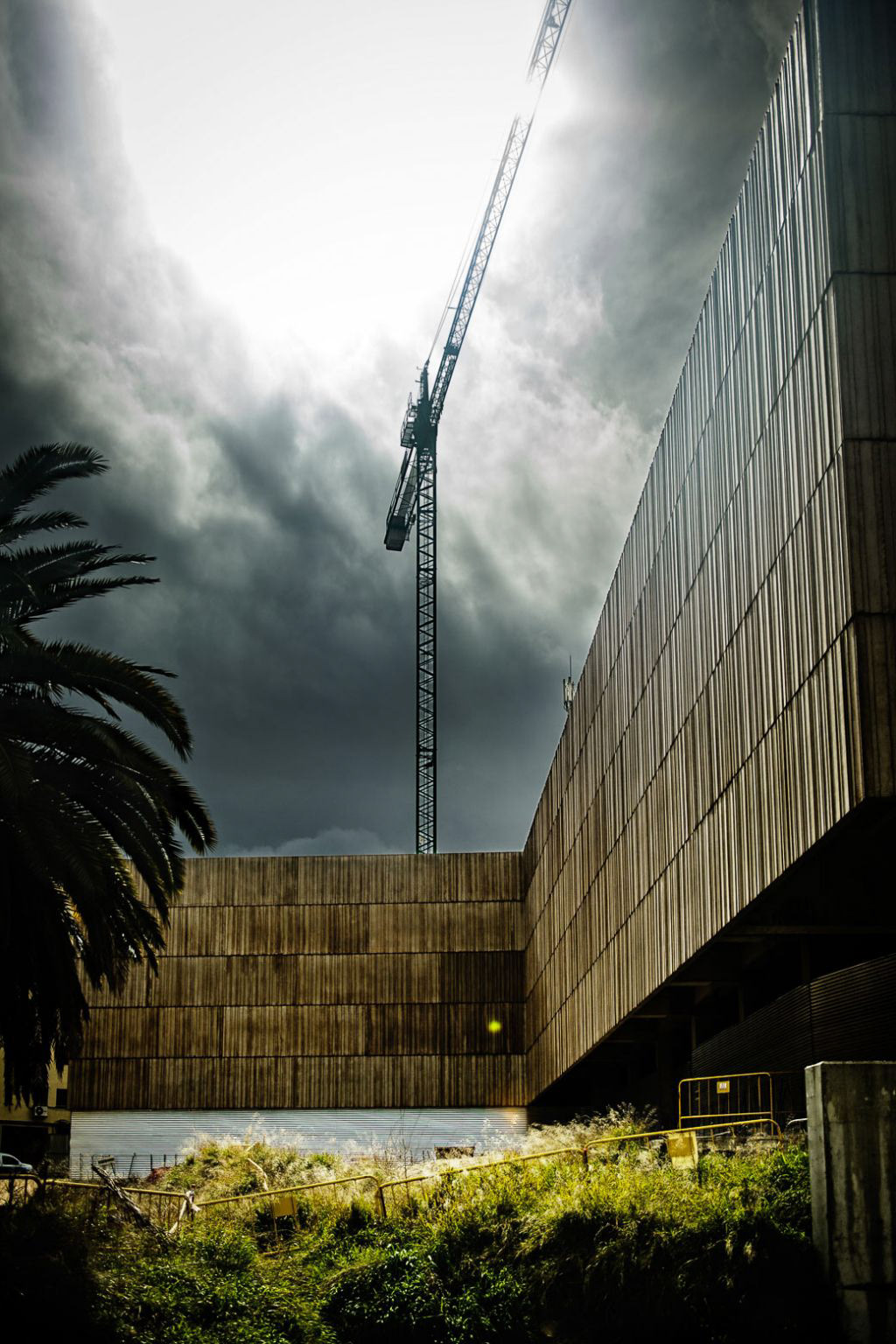
International Museum of Iberian Art. Jaén, Andalucía. This had to be the space in which to display the rich Iberian history of Jaén. With a total budget of €33 million (co-financed by the European Union), the museum should have opened in 2012 but instead, the works were stopped. Ahead of this election year, after over two years of vain promises, the works resumed resumed in 2014. It is difficult to say with certainty when they will be fulfilled.
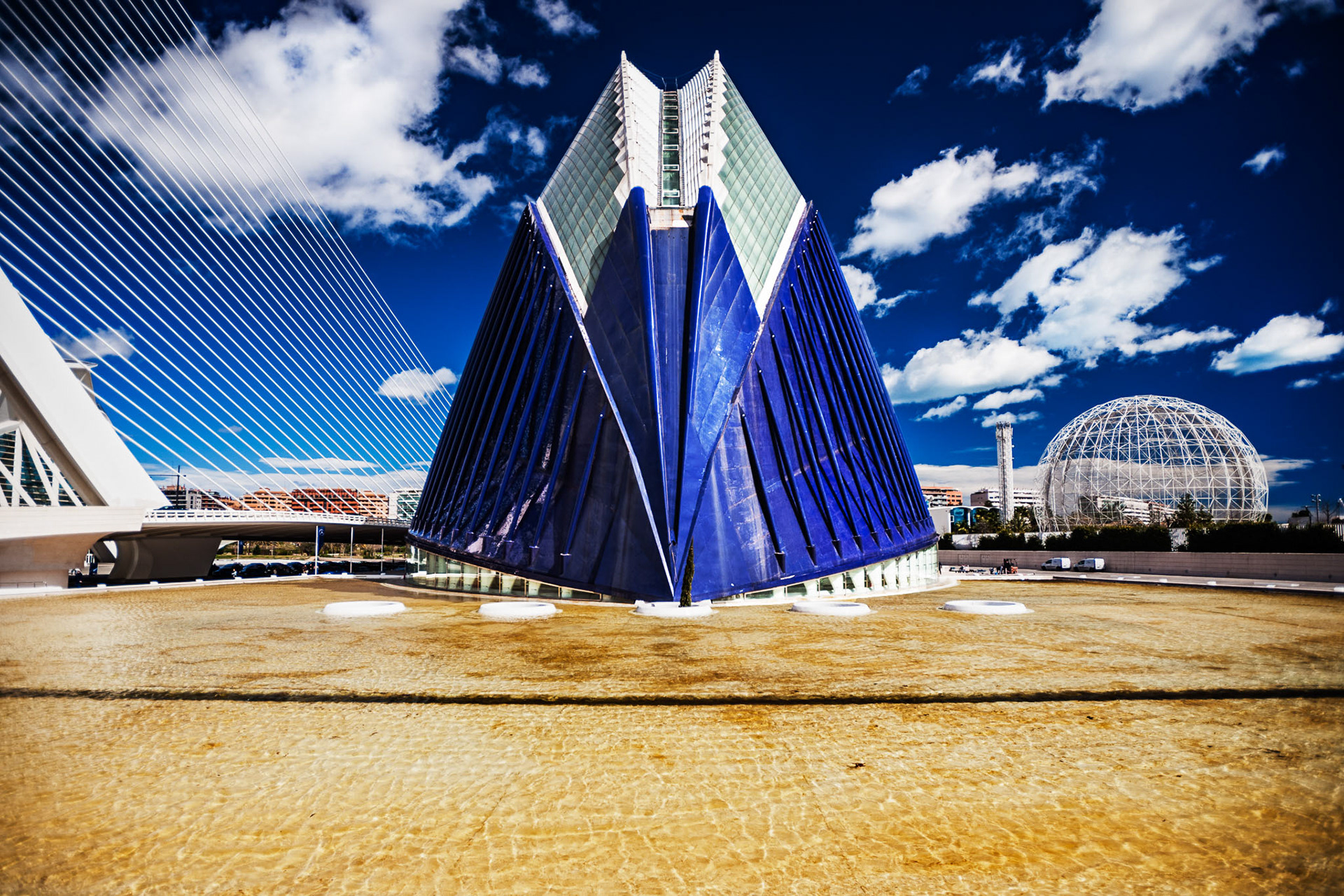
Multifunctional space ”L'Àgora”. València, Comunitat Valenciana. This building was officially inaugurated in 2009 despite that it was not completely finished. Its initial budget was €41 million, but the characteristic overrun of Santiago Calatrava's constructions boosted the final cost to €91 million. On top of that, it suffers from many construction flaws that require significant repair work. Since its opening, it has been strongly under-utilized, being eventless for more than 90% of the time.
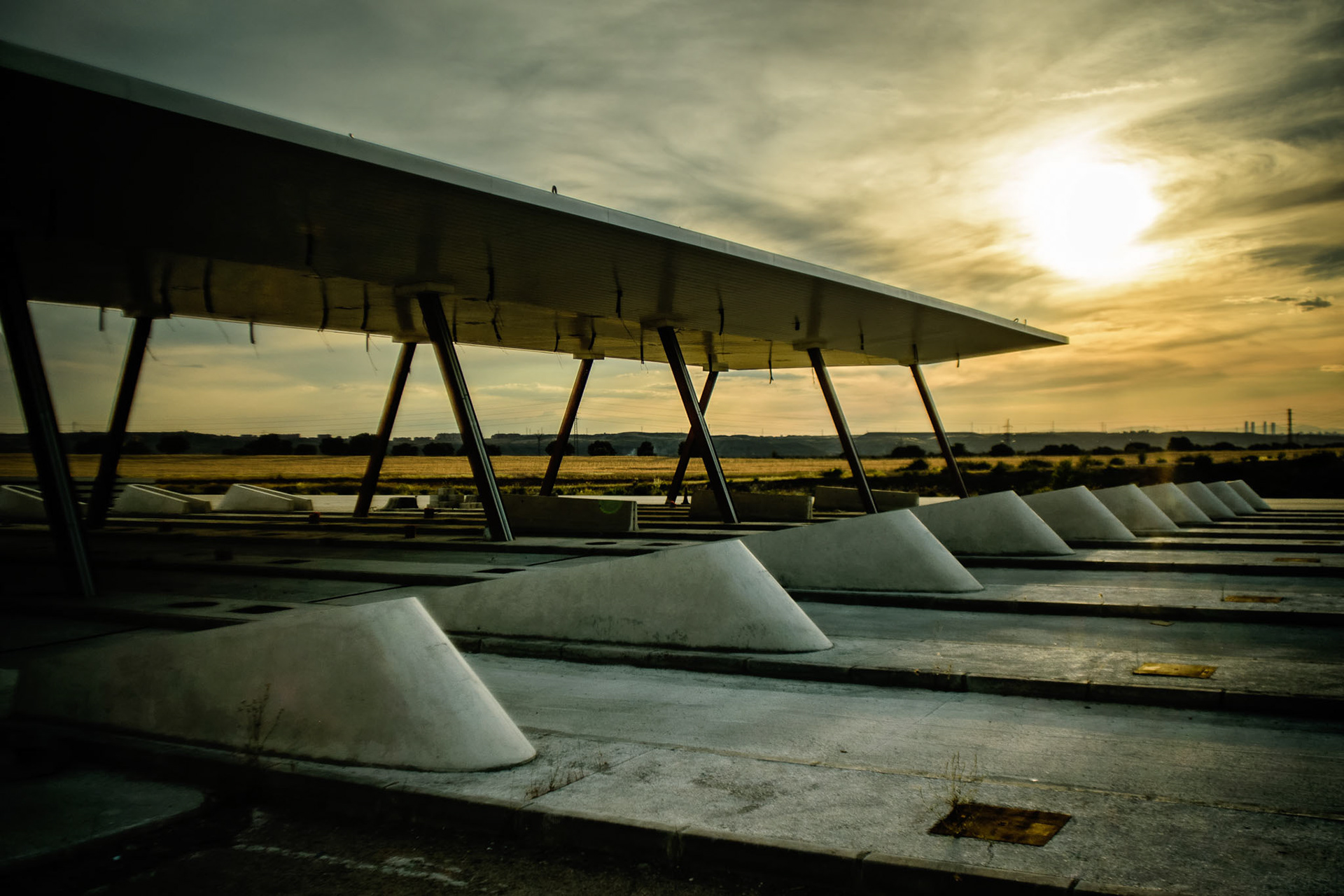
MP-203 Highway. Mejorada del Campo, Madrid. The idea behind toll-highway MP-203 was to reduce the traffic congestion in this part of Madrid's metropolitan area. In 2007, after having built 70% of its 12.5 km (and having spent €70 million on it), the constructing company abandoned the works because of problems with the connection with highway R-3, and the bypass of the high-speed rail tracks that could not be solved. These problems however, were known from the beginning, and the regional government let the works begin anyway. Today, the highway is used for leisure by joggers and bicyclists
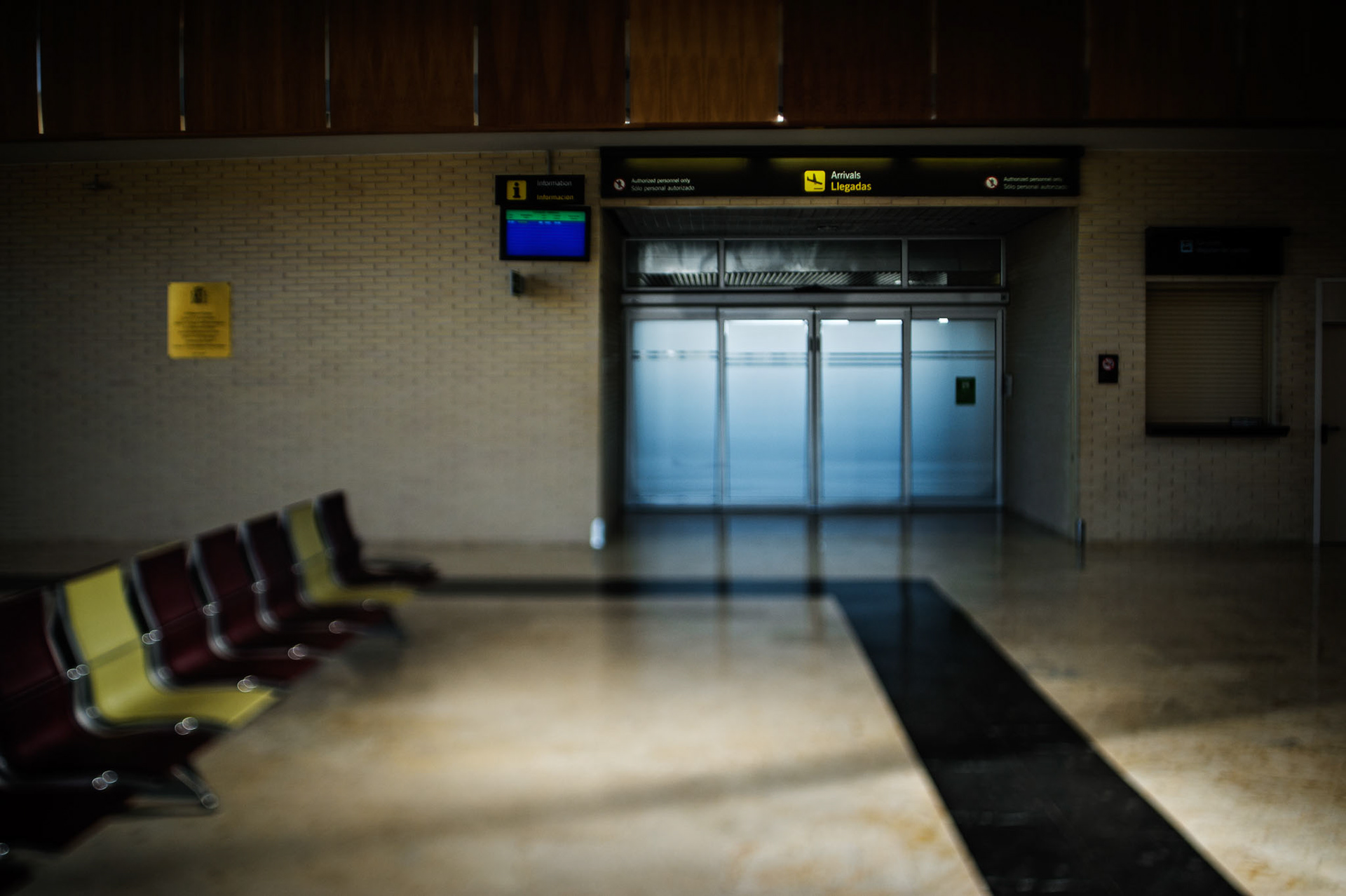
Logroño Airport. Logroño, La Rioja. The master plan drafted prior to its opening in 2003 forecasted more than 300,000 passengers by 2015. However, reality shows that in 2014, there were only around 12,000. The airport is only open 35 hours a week, just the time necessary to operate its twelve weekly flights to/from Madrid, the airport's only destination. Total cost of the infrastructure: €33 million.

Murcia International Airport. Corvera, Murcia. According to the regional president, the new international airport would ”not cost any money to the taxpayers” because it would be operated by a private concession. However, the region of Murcia had to underwrite a loan of €200 million to the concessionary company in order for the construction to proceed. The problem with this airport is that it is located only 20 km away from the San Javier Airport, so close that their air space is incompatible. The regional government urged the state owned network AENA to close San Javier Airport, but AENA had just invested 70 million euros in improving its facilities and wanted to be compensated for it, something the regional government refused to do. In this way, the new airport has been finished and closed for three years, and still there is not a clear solution for this dead end. Meanwhile, the concessionary company has initiated legal actions in order to recover its investment, which in the end might be paid by the taxpayers."
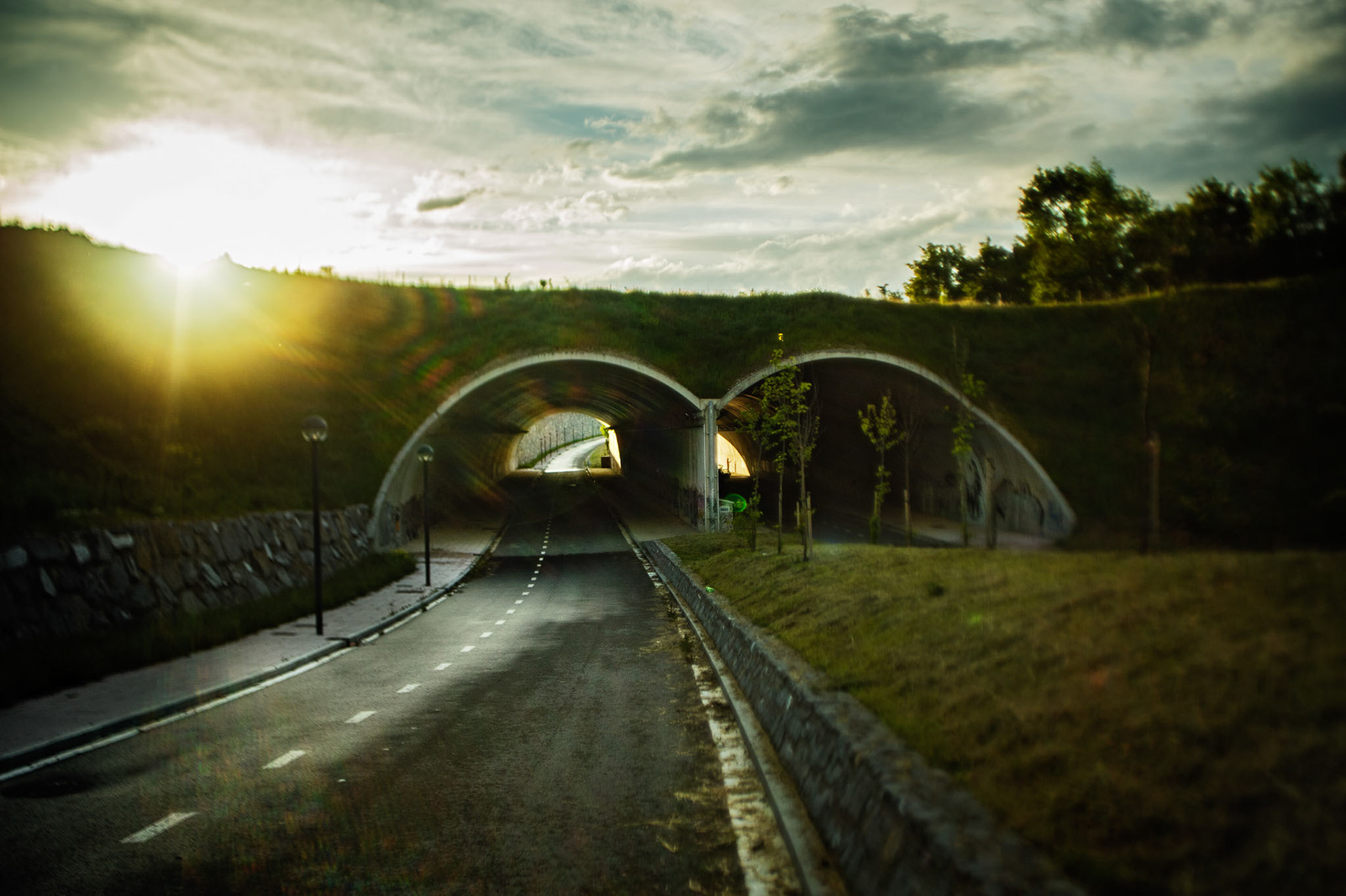
Southern Ring Road. Vitoria-Gasteiz, Araba, Euskadi. The new neighborhoods west of the city were to be served by a new ring road, but the crisis froze the construction plans, and only the first phase became a reality. This part is closed to traffic because it ends in a wall.
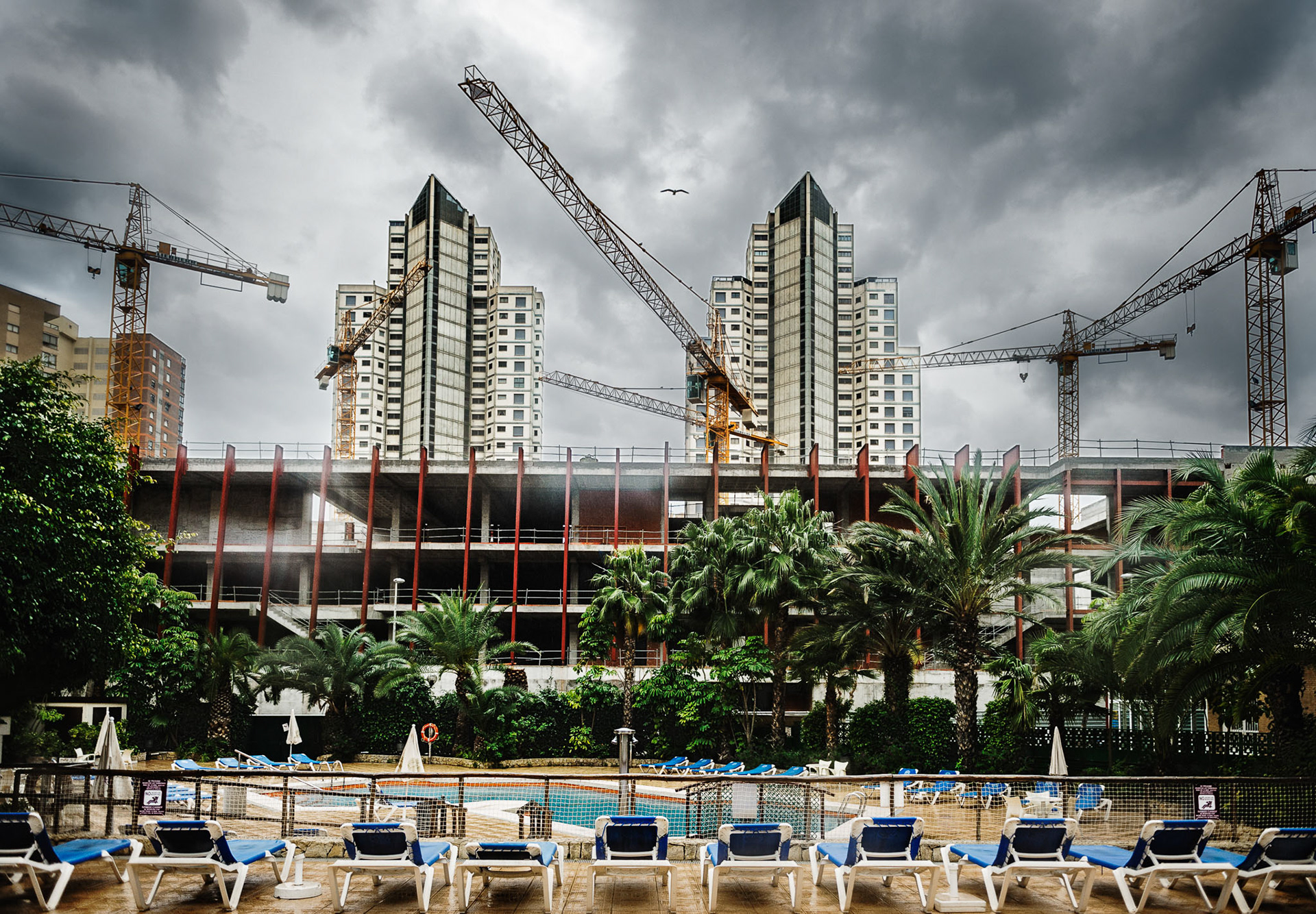
Culture and Convention Center. Benidorm, Alacant, Comunitat Valenciana. At a cost of 42 million euros, this 43,000 m² gigantic building was supposed to make Benidorm the cultural reference of the region. Now that the constructing fever is gone, a member of the City Council who belongs to the party behind the project admits that “for the cultural activity generated in Benidorm, the Town Hall Theater is enough.”
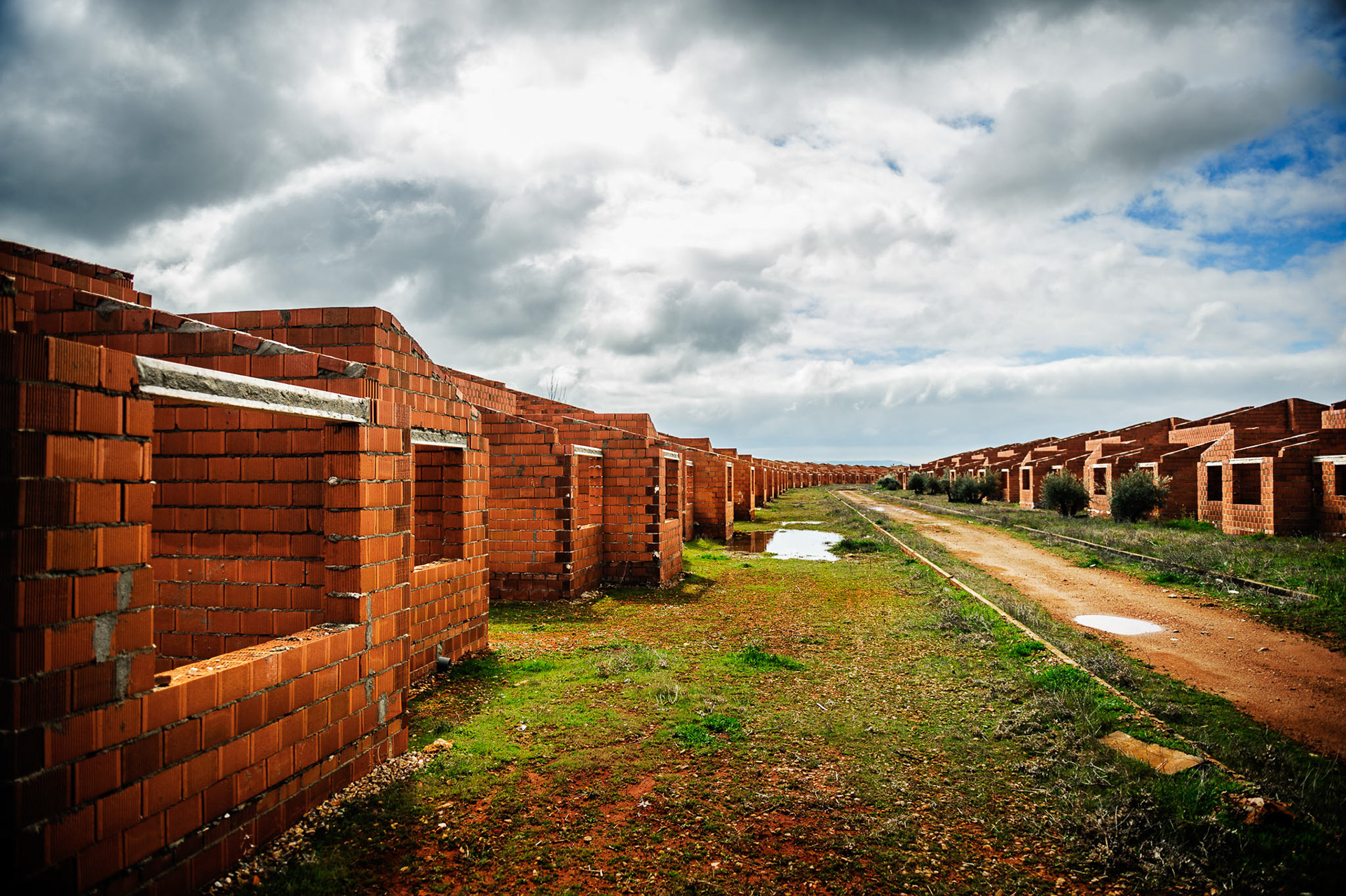

Leisure and Tourism Complex. Villamayor de Calatrava, Ciudad Real, Castilla-La Mancha. Golf course, hotel, spa, quad track, riding school, hunting grounds, and 500 luxury villas. A new concept of vacation 10 km away from the closed Ciudad Real Airport, and 30 km from the waste grounds that were supposed to hold one of the biggest casinos in southern Europe.
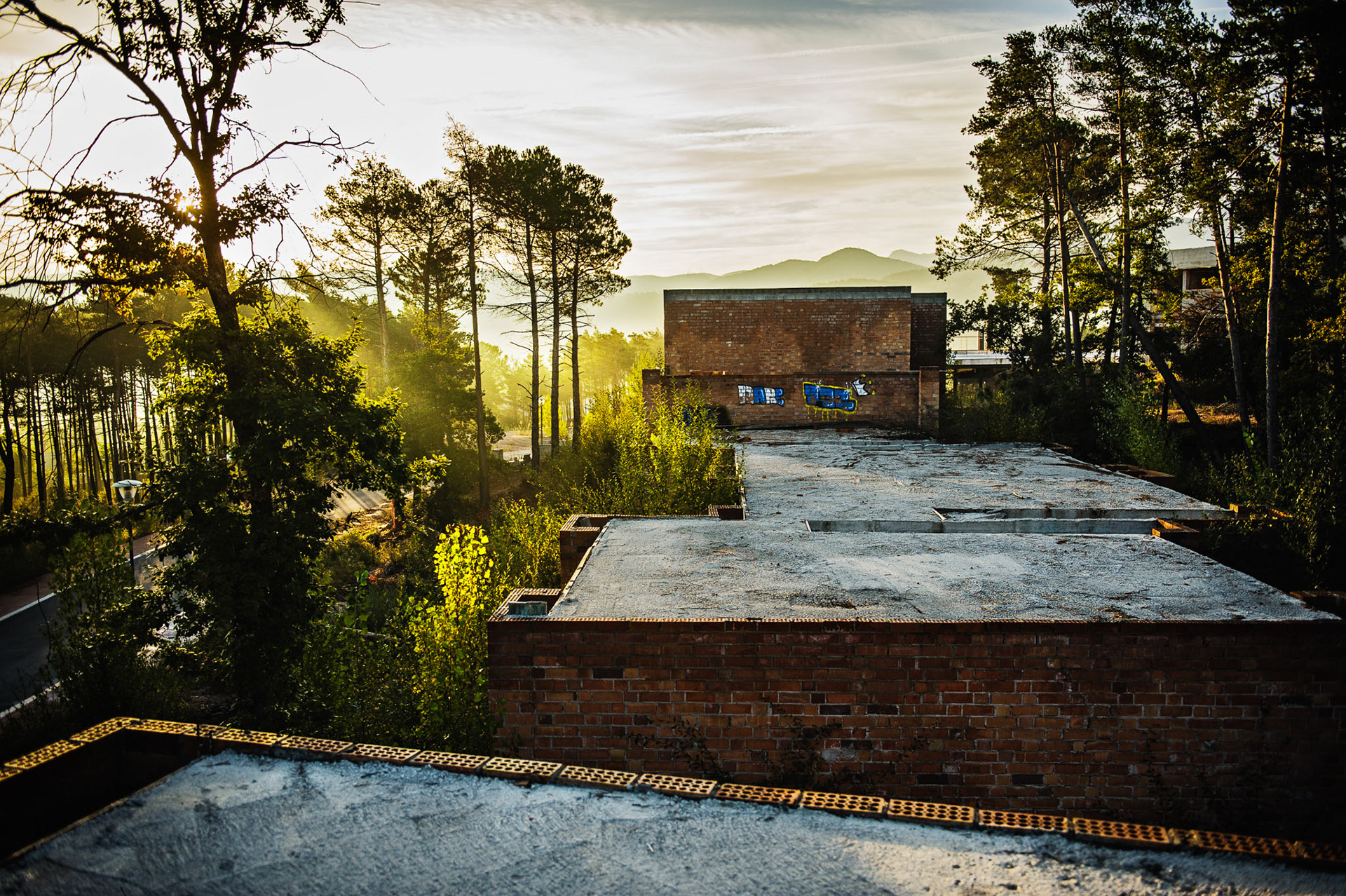
“Cases del Bosc” Residential Development. Viladrau, Girona, Catalunya. It was going to be a luxury complex of 180 houses, playground, social club, sports center, hotel, and a viewpoint from which to admire the stunning views of Montseny's natural park. “A place that inspires”, according to its slogan, but it was never fulfilled.

“Tuduero” Industrial Park. Tudela de Duero, Valladolid, Castilla y León. Everything seemed to go all right for what was going to be the largest private industrial park of the region. When it opened in 2007 the promoters claimed that 50% of the plots were already sold and that 1,500 jobs would be created thanks to the project. Eight years later, there is only one company established here, and several empty industrial units.
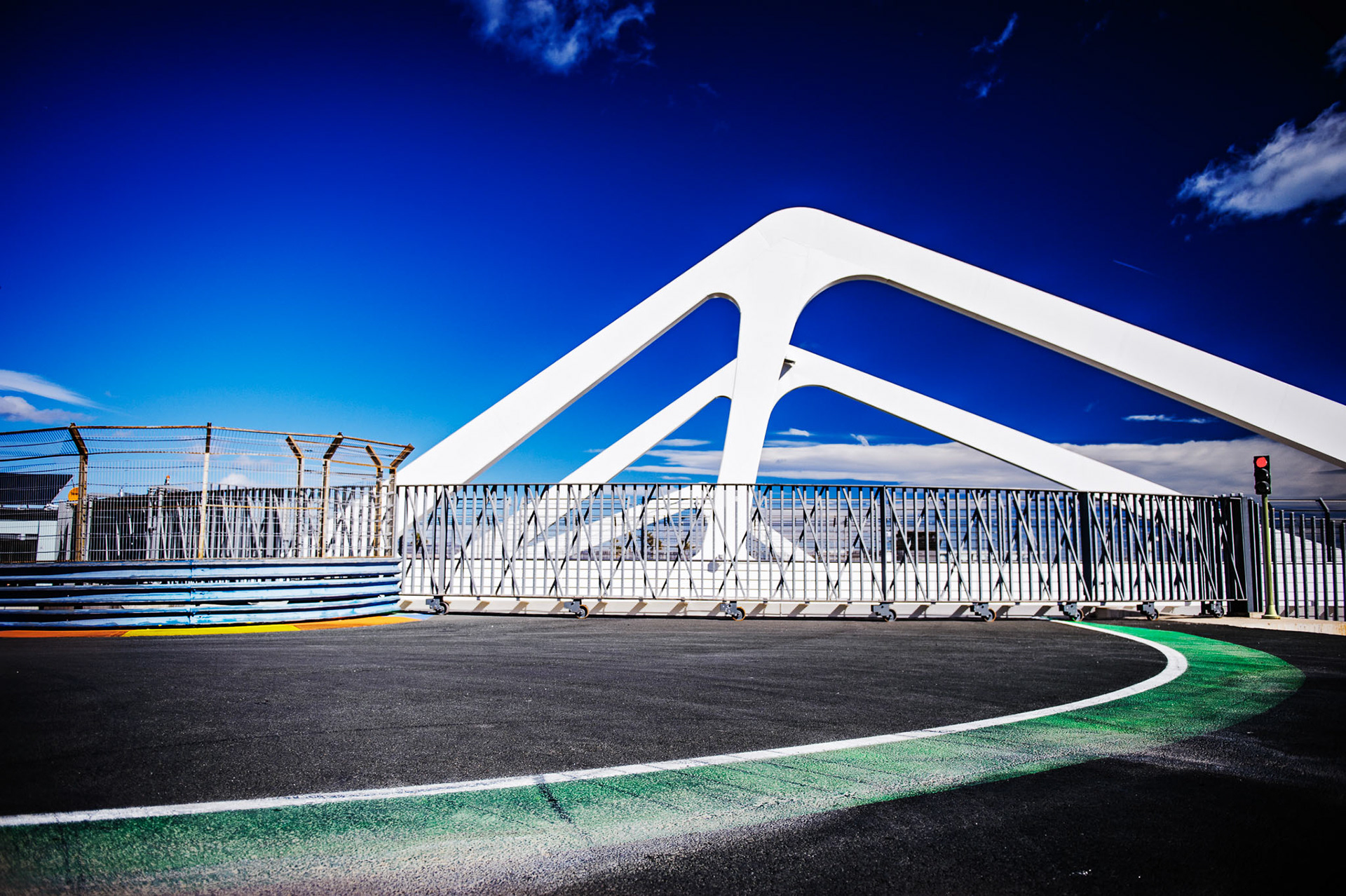
Formula 1 Street Circuit. València, Comunitat Valenciana. In 2007, the regional authorities announced that Valencia would be the host to a Grand Prix of the Formula 1 circuit for the following seven years. The regional president Francisco Camps promised then that the Formula 1 would have “zero cost” for the taxpayers. After these seven years have past the facts are: the last two races were cancelled because there was no budget for it, the F1-adventure has been paid with almost €300 million of public money, and that Francisco Camps is indicted for corruption in connection with the Formula 1 contracts.
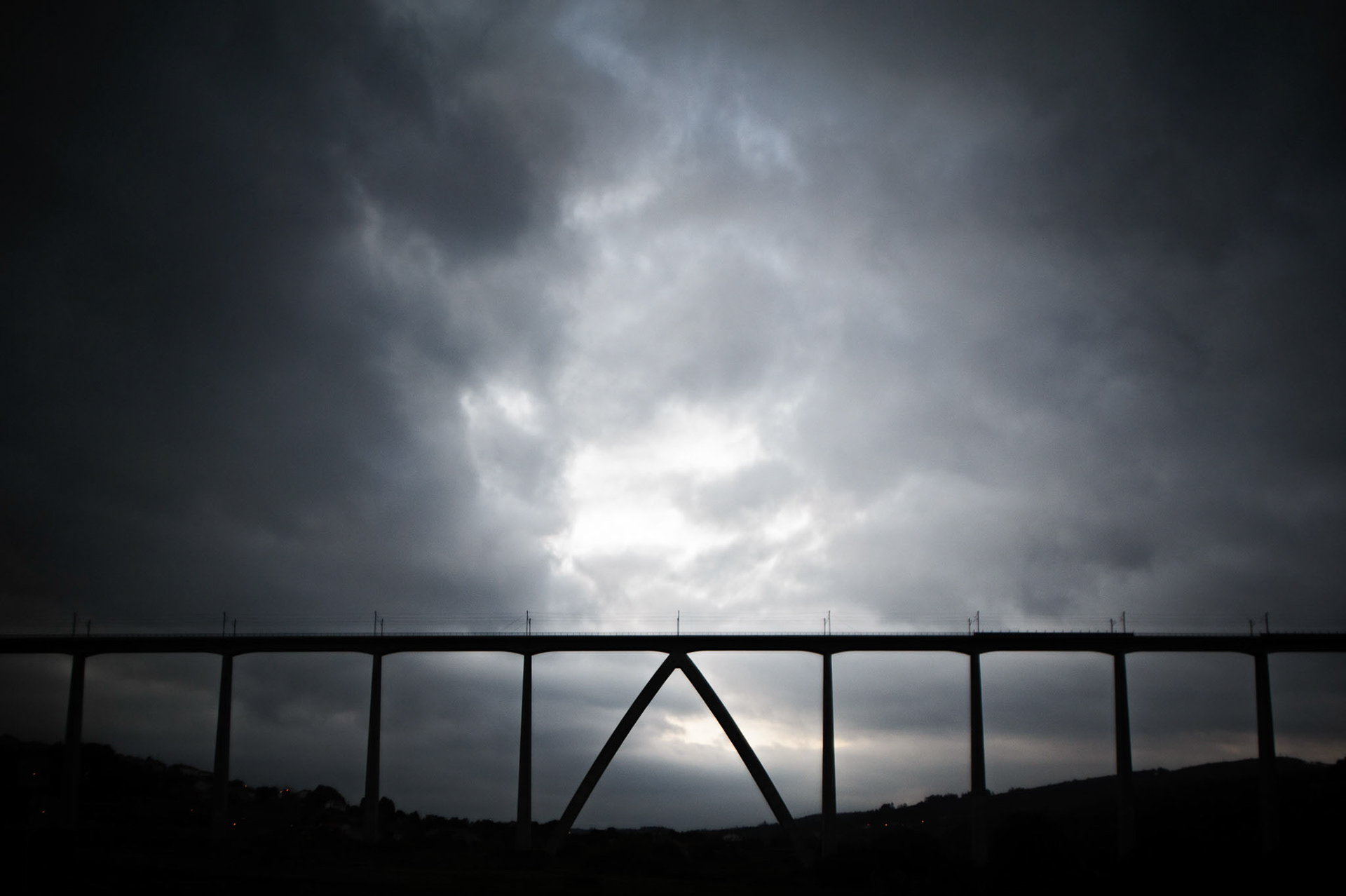
High-Speed Rail Viaduct. Santiago de Compostela, A Coruña, Galicia. High-speed rail requires the tracks to be as flat and straight as possible. Therefore, the fragmented orography of this part of Galicia has caused the cost of the line Ourense-Santiago to rocket up to €2.5 billion euros (of its 87 km, 50 km pass over a viaduct, or go through a tunnel). However, it has not been very much of a public success. During its first year of operation (2012), the trains did not even reached an occupancy rate of 20%, and there has not been a dramatic increase after that, in spite of the new policy of lower ticket prices.
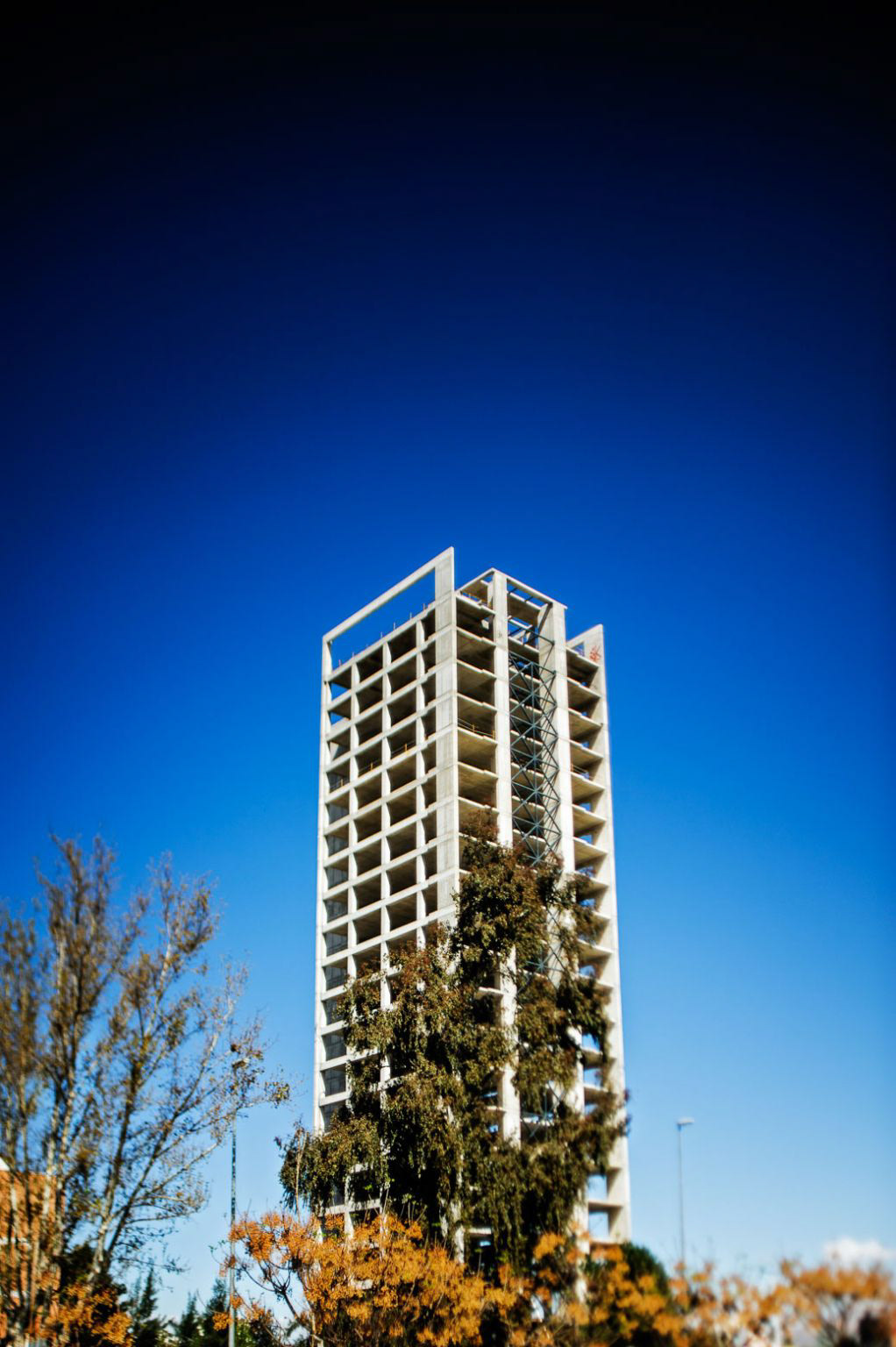
”Huerto del Emir” Hotel. Murcia. It was going to be the first 5-star hotel in Murcia, but it has only been used by the city's fire department as training grounds.

Salamanca Airport. Salamanca, Castilla y León. The new terminal was inaugurated in 2005 after an investment of €7 million and was recently refurbished for another €6.5 million. It has a capacity of 400 passengers per hour, but last year it served only 48 passengers a day. Its only regular connection is going to be cancelled when the regional subsidy of €2 million to the airline operating it disappears.
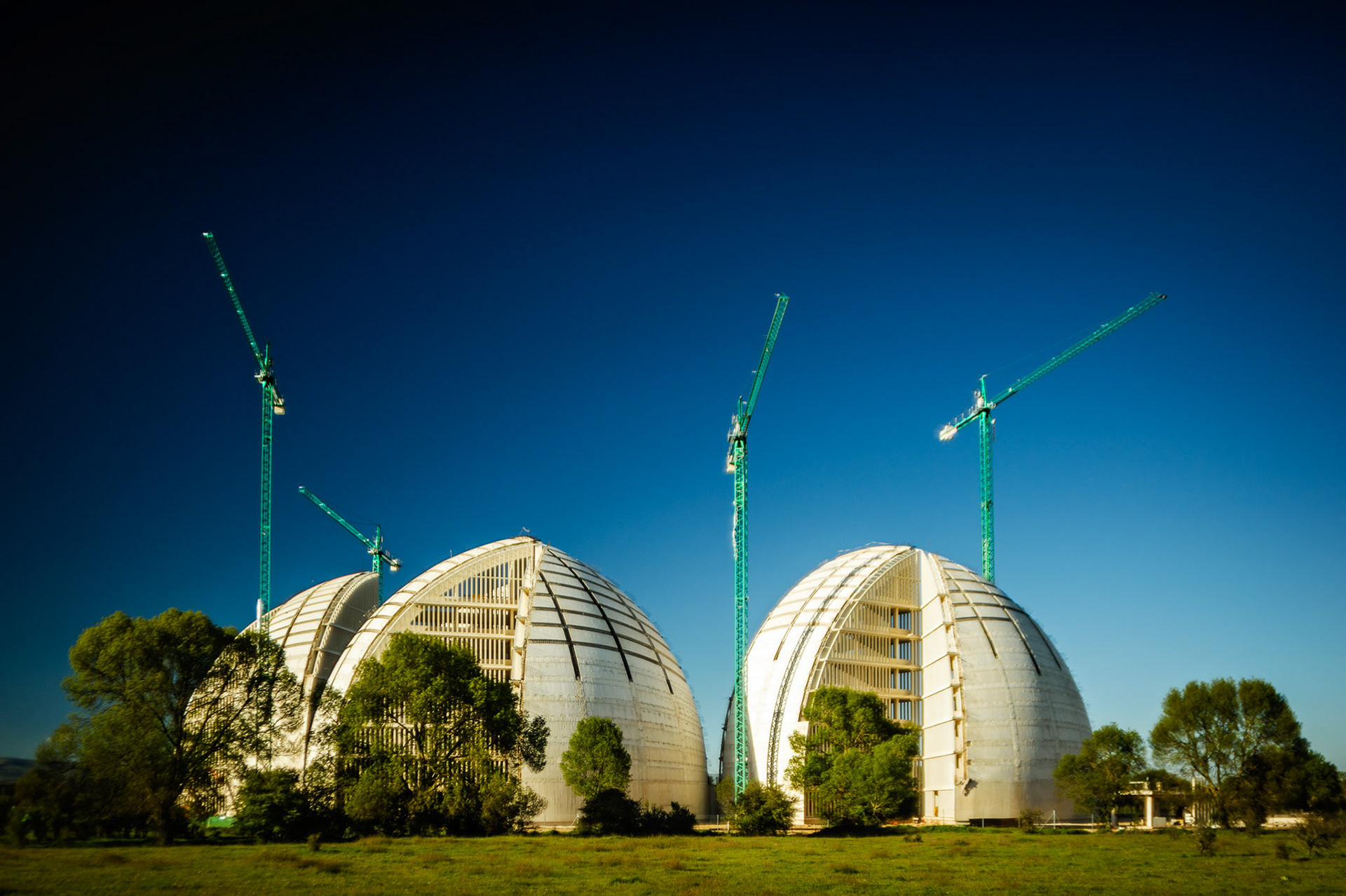
The City of the Environment. Garray, Soria, Castilla y León. In order to prevent the project from being appealed by environmentalists, the regional government passed a special law to approve the construction of The City of the Environment. With sustainability as its leitmotif, the project comprised a technology park for 100 companies in the environmental sector, an industrial park focused on environmentally friendly activities, a convention center for 30,000 visitors/year, a hotel, a sports center, an archaeological site, a public river park, and 780 sustainable houses. In the parking lot, each of the 709 parking spaces would be equipped with charging points for electric vehicles (while in 2012, in the whole of Spain, only 484 electric cars were sold). When the works were stopped in 2013 due to financing problems, 52 million euros of public money had already been spent here. Its future has been compromised even more after the Spanish Constitutional Court ruled unconstitutional the law by which it was approved. In 2014, a court ruling stated that the complex was to be demolished, and the landscape restituted. Because the irony of it all is that the complex was built on virgin land that was “especially protected”.
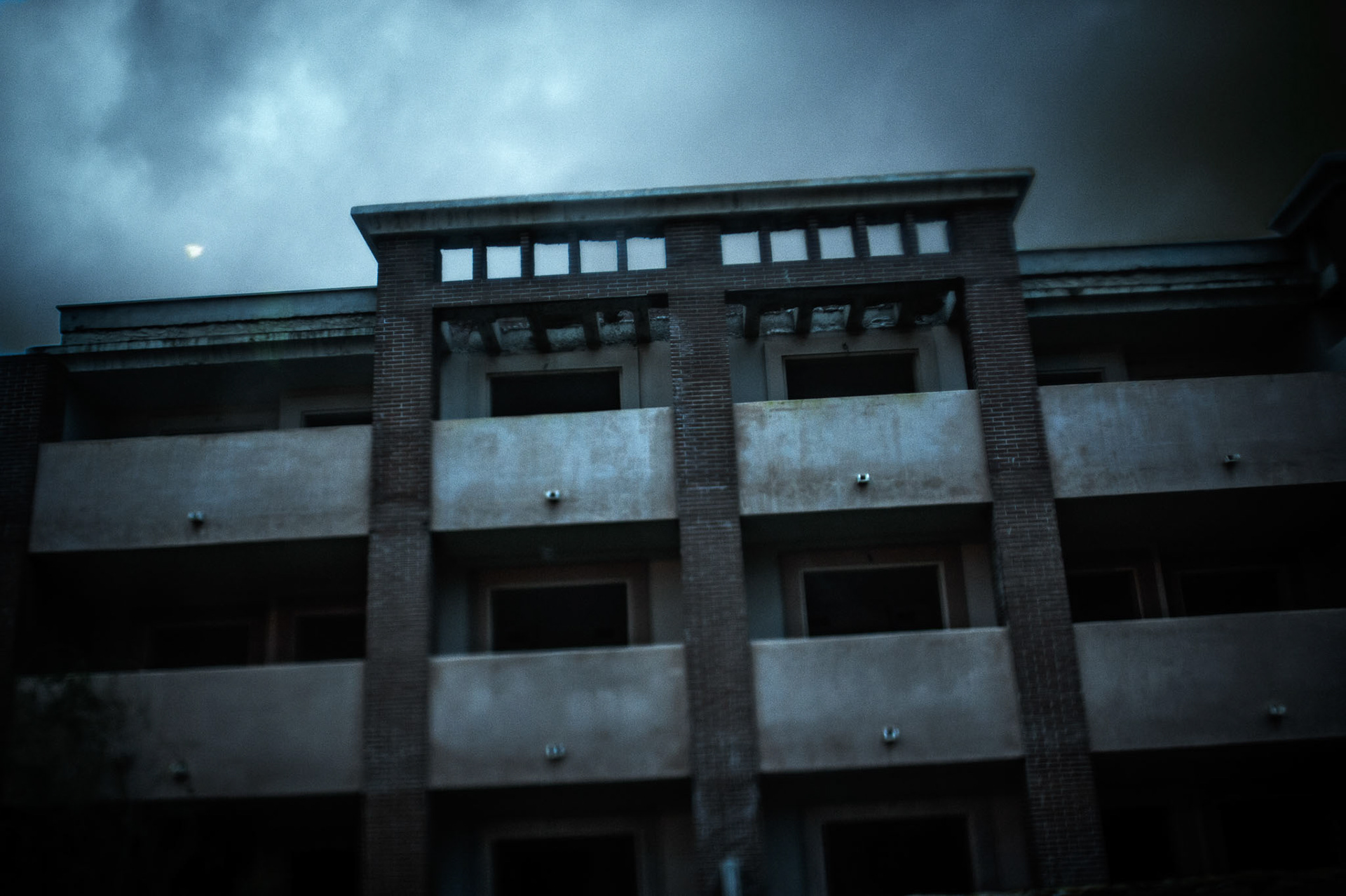
”Casares del Sol Suites” residential development. Casares, Málaga, Andalucía. As developers fled Marbella from saturation and corruption scandals, Casares was called to be the new golden mile of the Costa del Sol as the construction of luxury resorts thrived here. Today this area is known as the ”Chernobyl of Málaga”. In 2012, the former mayor and the urban planning councillor were indicted for corruption.

Requena-Utiel High-Speed Rail Station. Requena, València, Comunitat Valenciana. It has been almost a policy to build HSR-stations far from the village centers, in the middle of nowhere. This has resulted in practically deserted stations such as this one, which, with its 21 daily travelers, is one of the least trafficked in the country. The shops at the station never opened and are used as storage rooms. In 2013, the bus service to and from this €12 million station was cancelled due to lack of viability.
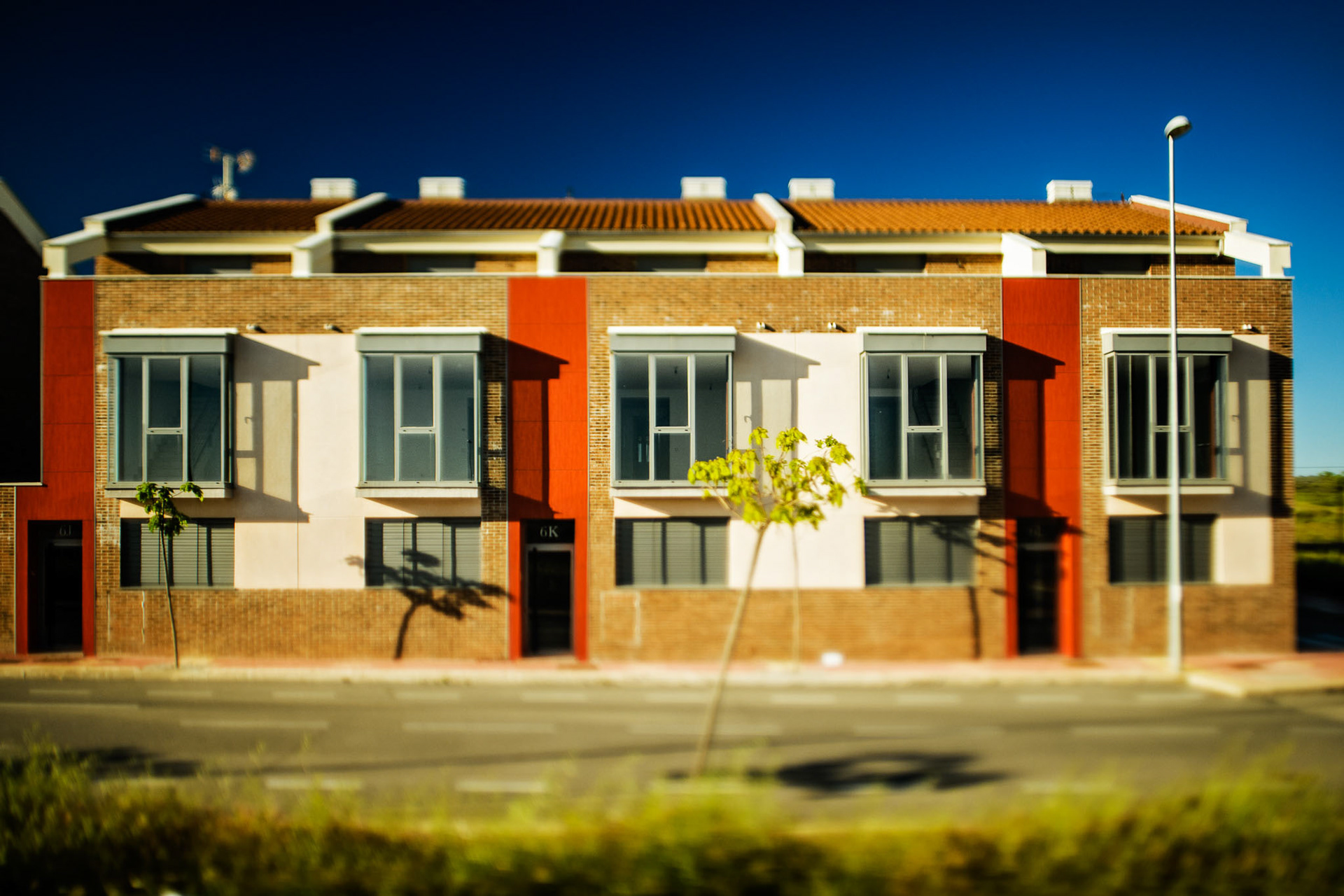
Municipal Town Planning Plan of Horche. Horche, Guadalajara, Castilla-La Mancha. In 2004, with the excuse of the construction of a high-speed rail station nearby, the town plan was redrafted. These changes allowed for the construction of 9,000 new homes, meaning that the population could have grown from 1,800 to 27,500 people. In reality, “only” a very small amount of the new houses were ever built, and even less were sold. The City Council's debt with the banks passed from €18.000 in 2008 to €819.000 in 2013.
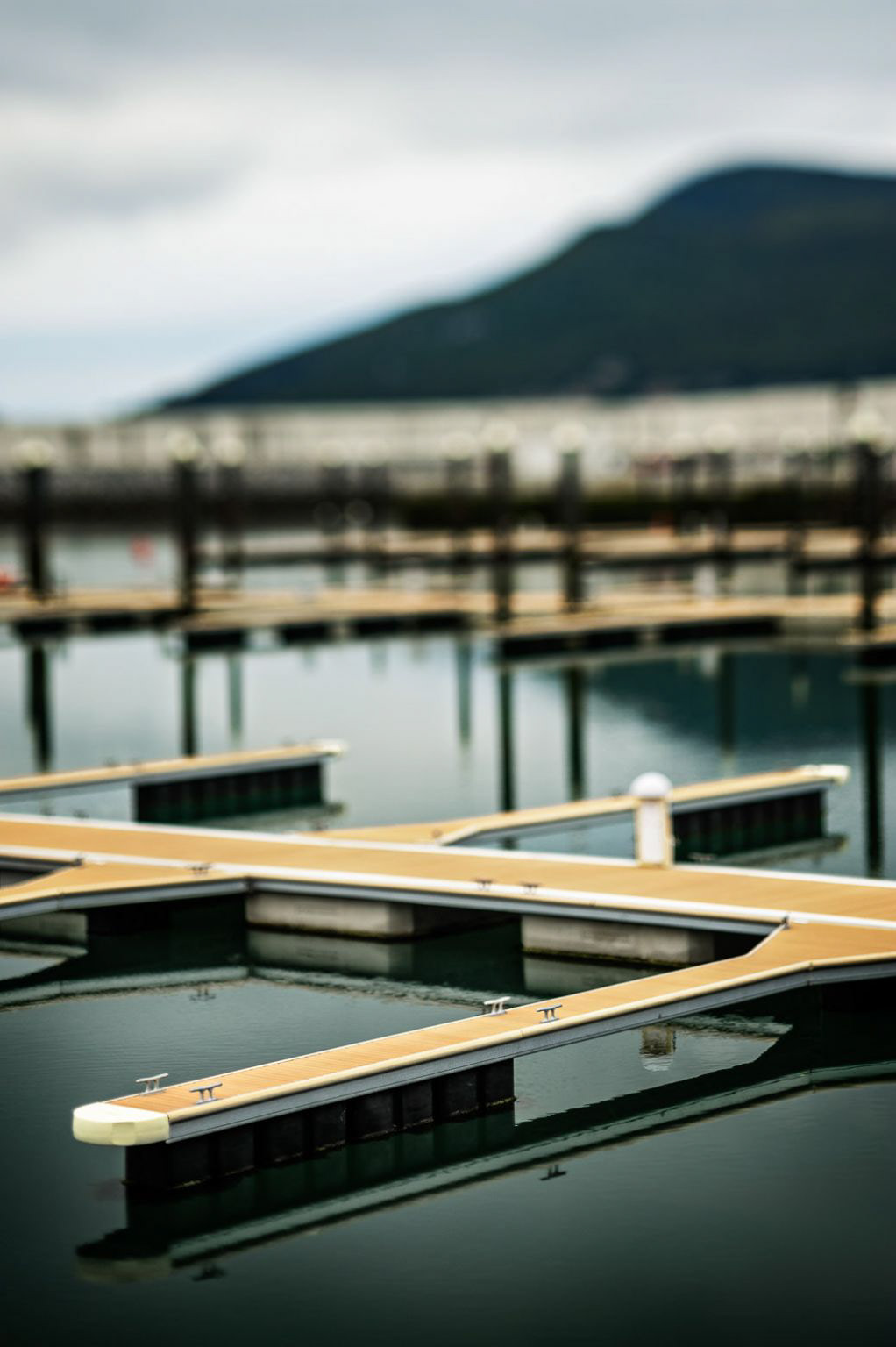
Marina. Laredo, Cantabria. Four years after its opening, the occupancy rate of this 90 million euros marina is barely over 10%. Half of the investment is public money, and the cost for the taxpayers could increase if the regional government has to take over the debt of the bankrupt concessionary company, and the cost overrun of €28 million.

Highway R-3. Madrid. In order to solve the traffic congestion around Madrid, the radial toll-highway system was conceived as an alternative to enlarging the existing free highways. However, they were enlarged anyway, which resulted in the newly build toll-highways receiving only one-fourth of the forecasted traffic. The concessionary companies of all four radial highways, as well as five other toll-highway concessionaires around Spain, have filed for bankruptcy. Now, the government must find a solution that saves the Spanish taxpayers from paying a €5 billion bill.
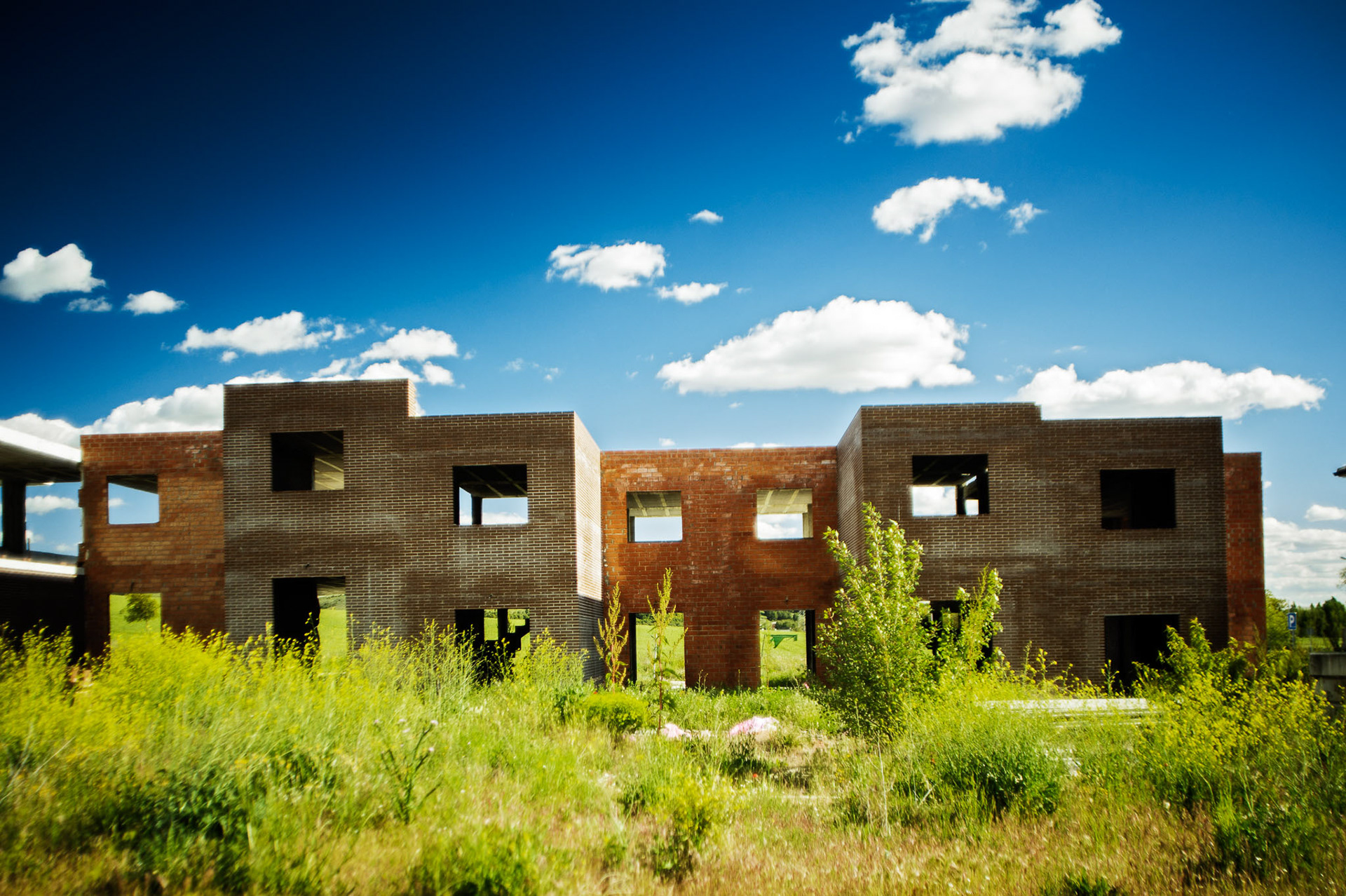
“Puente Real” residential development. Cabezón de Pisuerga, Valladolid, Castilla y León. “A peaceful place with green and leisure areas, all what you and your family need for a dream life”. The almost 6,000 houses that were planned in this small town would have supposed an eightfold increase in population, but the burst of the property bubble prevented it.

León Airport. León, Castilla y León. Despite that the airport never suffered from any kind of traffic congestion, three successive enlargement projects were carried out between 2005 and 2010 for 80 million euros, increasing its capacity to over one million yearly passengers. In 2014, the airport served only 23,000 passengers. The thing is that the airport has always had problems in attracting traffic despite that the regional authorities have subsidized the airlines operating here with a total of 20 million euros since its opening in 1999.

Enlargement of the port of ”El Musel”. Gijón, Asturias. The works of enlargement of the port of ”El Musel” were finished in 2010 after an investment of €630 million (40% of which were EU funds). Since then, it has remained empty and virtually unused. The regasification plant (another €380 million) was finished in 2012, but could not be put into operation because it was not connected to the national gas system. Moreover, in 2013, the Superior Court in Madrid ruled it to be illegal because it is built within 2 km of inhabited areas. In spite of the sentence and having a study stating that this plant will not be put into service until at least 2017 due to lack of demand, the national government authorized the construction of the pipeline (another 12 million euros) that now links it to the national gas system. If the Supreme Court ratifies its illegality, it will have to be demolished.

Deserted street grid. Alcarràs, Lleida, Catalunya. Alcarràs used to be a small rural town of less than 5,000 inhabitants, but the plan drafted during the construction boom contemplated almost 13.000 new homes, which would have meant an eightfold increase in population. Far from all were built, nevertheless Alcarràs has, during these years, doubled its population, and the empty homes have more than trippled.
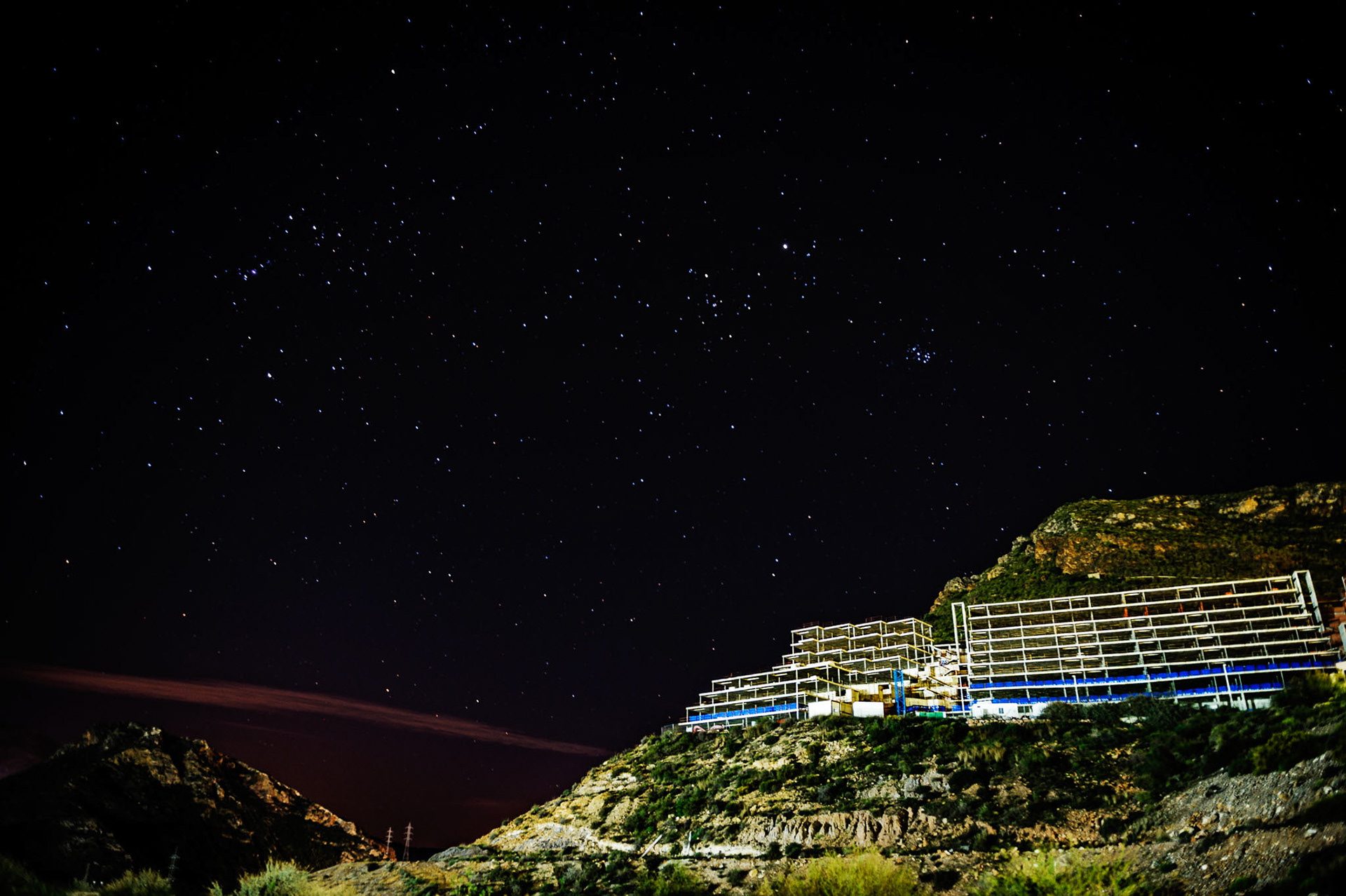
“Atalaya de Mojácar” appartment buildings. Mojácar, Almería, Andalucía. The crisis hit like a lightning. Two-thirds of this development were finished, but the money for the last part ran out.
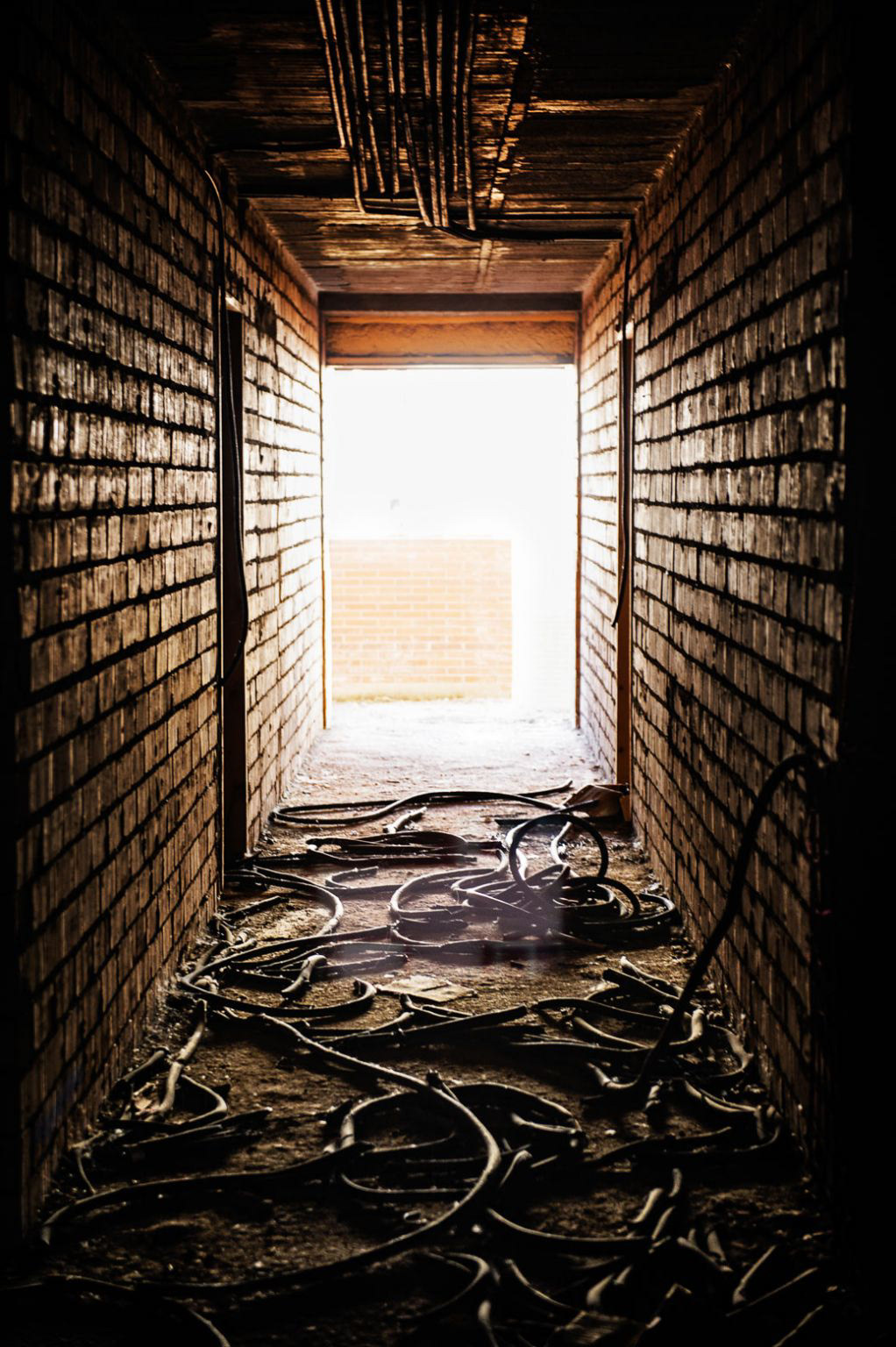
”Los Álamos” Apartment Complex. Mérida, Badajoz, Extremadura. “El Prado” district, in the outskirts of Mérida, is one of these new neighborhoods that popped out from nowhere during the worst years of the property bubble. This complex was abandoned in 2009, when the construction company went bankrupt. In summer 2013, 13 families with no resources moved in here, but the local authorities evicted them a few months later and proceeded to wall in the complex. These families are now being prosecuted for illegal appropriation.
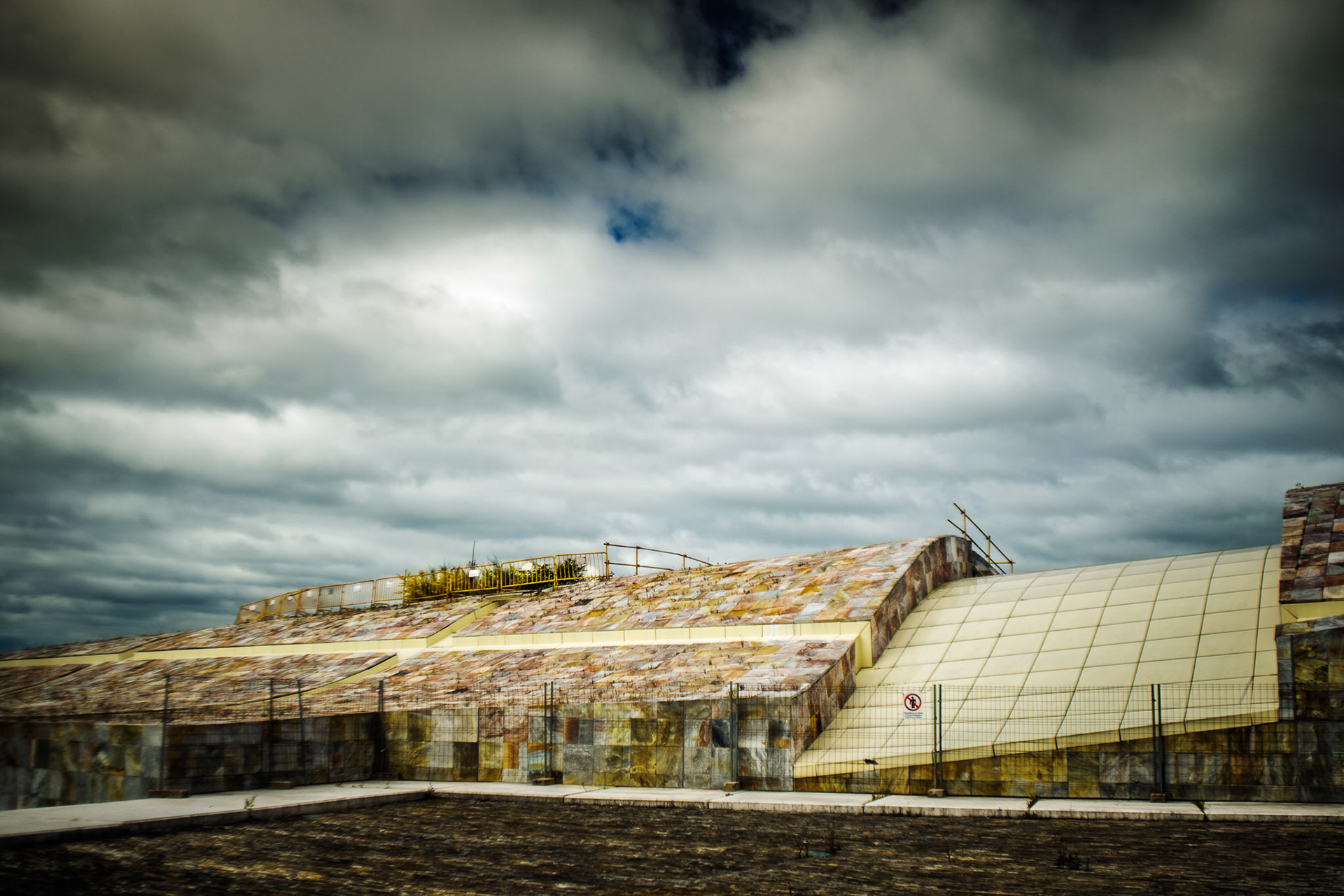
The City of Culture. Santiago de Compostela, A Coruña, Galicia. Like a pharaoh planned his pyramid, the former long-time regional president Manuel Fraga envisioned this gigantic cultural complex as his legacy. The actual contents, however, were never a matter of deeper thought. The complex did not have a strategic plan until two years after its inauguration, and one of the buildings changed purpose six times over the years. The original budget was €108 million, but it rapidly escalated, reaching finally around €300 million, and it could have been even more if the last two buildings out of six had been constructed. This enormous cost overrun has drained the cultural budget of Galicia. In 2015, around 16% of the culture budget of the regional government is spent here, but during the construction period, it reached over 30%. The new National Library of Galicia is a good example of that, built with a capacity for 1 million books, it displays embarrassingly empty shelfs, while local library branches cannot afford buying new books.
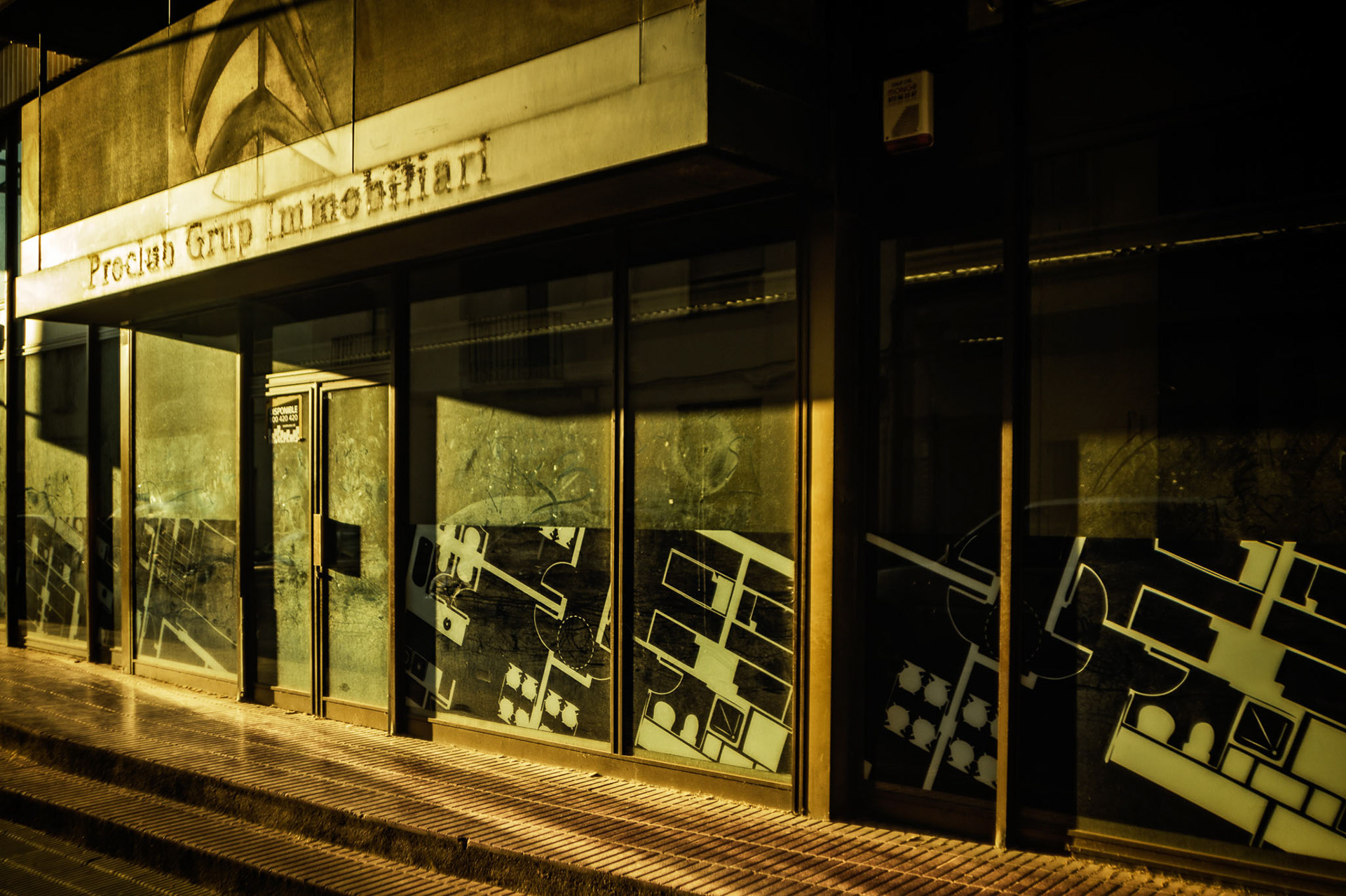
"Proclub Grup Immobiliari" Property Developer. Palamós, Girona, Catalunya. The burst of the bubble wiped out more than 200,000 companies related to the property market. Around 90% of the real estate agencies, almost 30% of the developers, and more than 40% of the constructors did not survive the crisis.


Andorra- La Seu d'Urgell Airport. Ribera d'Urgellet, Lleida, Catalunya. The regional government acquired this aerodrome in 2007 with plans of transforming it into a commercial airport with an investment of 12 million euros. However, no air traffic forecast has been performed. Due to the geographical characteristics of the airport, only small aircrafts of up to 40 passengers can land on it. The regional government estimates that 80% of the economic benefits of the airport will go to Andorra, even though the investment is solely Catalan.
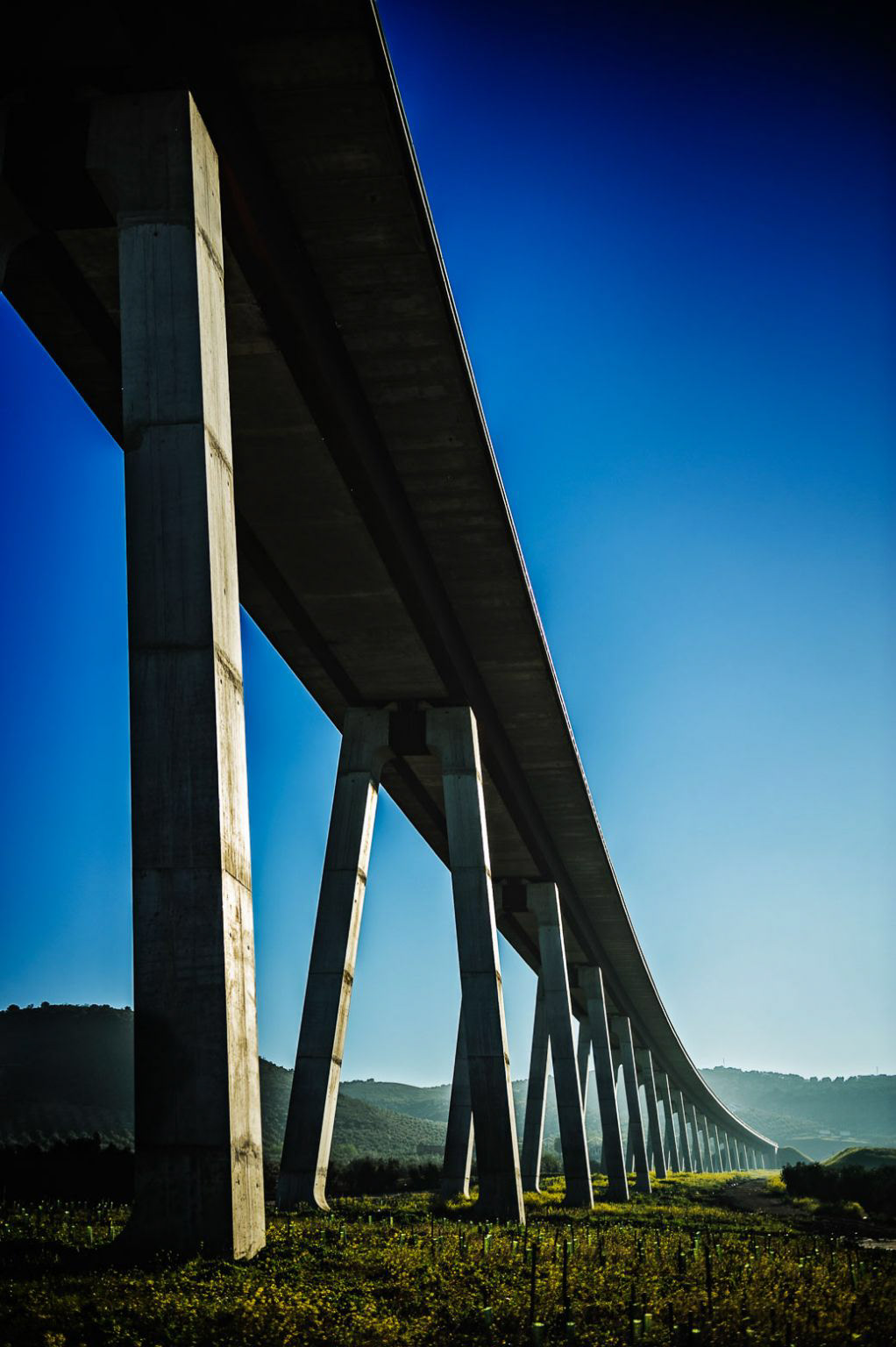
High-Speed Rail Viaduct. Antequera-Granada line, under construction. Archidona, Málaga, Andalucía. Experts state that an average high-speed rail (HSR) corridor between two cities can be regarded as socially beneficial when it carries around 8 million yearly passengers. In Spain, not even the HSR corridor between Madrid and Barcelona reaches that figure, so the perspectives for the line between Antequera and Granada (serving a total population of only 280,000) are rather despairing. Its budget amounts to €1.2 billion, half of which is financed by the European Union. Furthermore, Antequera will be the only city besides Madrid and Barcelona in having two HSR-stations.

Planned Site for Eurovegas. Alcorcón, Madrid. In early 2011, Sheldon Adelson (CEO of Las Vegas Sands) announced his intention of building a “mini-Las Vegas” in Spain. He knew that with the prevailing economical situation, just the promise of 180,000 jobs would grant him a red carpet from any politician. For more than one year, he was in talks with Madrid and Barcelona to host the gaming complex, playing both cities against each other for the best deal. In September 2012 he finally decided for Madrid, where the regional president had said that she would “change any law that has to be changed” in order to take Eurovegas to Madrid. And she did indeed go a long way by, among other measures, lowering gaming taxes from 45% to 10%, or pressing the national government to lift the newly passed public-smoking ban. However, it was never clear how Adelson would raise the money for his megacasino, and when in December 2013 he decided to withdraw his plan, Spanish politicians where left with a castle in the air. Since then they have been trying to find a substitute, with no success.
